

Navigation Lights
- You are required to display the appropriate lights at night or during times of reduced visibility.
Navigation lights are used to prevent collisions at night or in times of reduced visibility, and are an essential tool in keeping you and your vessel safe. Nav lights allow you to see other nearby vessels, and allow other vessels to see you.
Nav lights also provide information about the size, activity, and direction of travel. By understanding the characteristics of Nav lights, you can determine an appropriate course of action as you approach another vessel.
On any vessel, navigation lights have a specific color, (white, red, green, yellow, blue), arc of illumination, range of visibility, and location, as required by law and regulations. For the purposes of this course, we will concentrate on pleasure boats under 65 feet in length. Knowledge of navigation lights is important to a small-boat skipper for separate, but important, reasons.
- You are legally responsible for displaying lights of the proper color, intensity, location and visibility on your boat.
- Knowing the type and heading of another boat.
Legal Requirements
Vessels are required to show the proper navigation lights from sunset to sunrise in all weather conditions, good and bad. During these times, no other lights that could be mistaken for lights specified in the Rules of the Road can be displayed, nor any lights that impair the visibility or distinctive character of navigation lights, or interfere with the keeping of a proper lookout. The Rules also state that navigation lights must be shown in conditions of reduced visibility, and may be shown at other times considered necessary.
It's Your Responsibility
It is the responsibility of the owner/operator of a vessel that she show the proper navigation lights for her size and the waters in which she is operating. It is not the responsibility of the manufacturer, importer, or selling dealer. Many boats are delivered with lights that do not meet legal requirements with respect to technical characteristics or placement on the vessel. Remember also, that the angles of visibility must be met when the boat is underway-if your boat rides at a significant bow-up angle, take that into consideration when installing and/or checking your lights.
Navigation Lights for Powerboats
Power driven vessels underway shall exhibit a masthead light forward, sidelights and a stern light. Vessels less than 12 meters in length may exhibit an all around white light and side lights. Power driven boats on the Great Lakes may carry an all around white light in stead of a second masthead light and stern light combination.

Sidelights - Colored lights - red on port and green on starboard - showing an unbroken arc of the horizon of 112.5 degrees, from dead ahead to 22.5 degrees abaft the beam on each side.
Combination lights - Sidelights may be combined in a single fixture carried at the centerline of the vessel.
Stern light - A white light showing over an unbroken arc of the horizon of 135 degrees, centered on dead astern.
Navigation Lights for Sailing
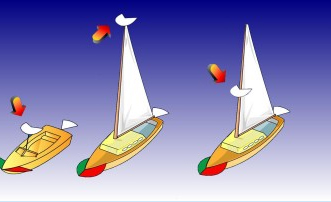
A sailing vessel of less than 7 meters in length shall, if practicable, exhibit regular navigation lights, but if not practical, she shall have ready at hand an electric torch or lantern showing a white light which shall be exhibited in sufficient time to prevent collision.
Diving Lights
Another light display that you may see in resort areas, or waters that have wrecks or reefs, is the night diving configuration. This has three vertical masthead lights, that have a red-white-red sequence. You must maintain a good distance from these vessels, and you should also be aware that there may be divers near you.
Interpreting what you see

It's great that you're learning the basics of lights - what is required and when they're required. But, this in only the beginning. You must also learn how to interpret the navigation lights that you see when you are underway at night- and for your safety-learn it well.
For instance, if you see a vessel approaching that shows a light pattern such as the ones to the right, you immediately know that you are in a crossing situation, and that you must yield to the other vessel - that's why it is red.

Seeing a green light over a white light indicates a fishing vessel actively trawling. You not only need to avoid the vessel, but you also need to remember that it could potentially have a very large net deployed that you will also need to avoid.
And there are numerous other lights and combinations of lights that you must be able to instantly recognize - the lights for a sailboat that is privileged over a motorboat, the special lights of various fishing vessels, a dredge or a vessel not under command. Study the requirements for navigation from the viewpoint of a "looker" as well as a boat owner.

Please verify you are a human
Access to this page has been denied because we believe you are using automation tools to browse the website.
This may happen as a result of the following:
- Javascript is disabled or blocked by an extension (ad blockers for example)
- Your browser does not support cookies
Please make sure that Javascript and cookies are enabled on your browser and that you are not blocking them from loading.
Reference ID: d36ef89d-311d-11ef-98d3-f59057d3b970
Powered by PerimeterX , Inc.
- Pontoon Boats
- Personal Watercraft
- nauticalknowhow
- Nautical Knots
- Tools and Calculators
Understanding Boat Navigation Lights
Boat navigation lights are essential when you’re out on the water. They’re essential, but it’s easy to misunderstand their uses and correct placements.
If you don’t know the correct placement for your stern lights or know what type of navigation light you need on your mast, don’t worry: we’re here to help. Below, we’ve got an overview of everything you need to know about boat navigation lights: what type of navigation lights you need, where to put them, and why you need to use them.
So without further ado, let’s learn more about boat navigation lights.
What navigation lights are required on a boat?
The U.S. Coast Guard Navigation Rules, International-Inland encompasses lighting requirements for every description of watercraft. The information provided there is intended for powerboats and sailing vessels less than 20 meters. The various options are illustrated.
The U.S. Inland Rules apply inside the demarcation lines at the entrances to inlets, bays, rivers, etc. The demarcation lines are shown on coastal charts as magenta dashed lines. Once outside of the demarcation lines, International Rules apply.
Powered Vessels
Power boats less than 20 meters shall exhibit navigation lights as shown in Figure 1. (Note: 2 masthead lights are optional for vessels under 50 meters. Vessels over 50 meters will display two masthead lights.)
Vessels of less than 12 meters in length, may show the lights in either Figure 1 or Figure 2.
Powerboats less than 7 meters whose maximum speed cannot exceed 7 knots may exhibit an all-round white light, and if practicable sidelights instead of the lights prescribed above, in international waters only.
Sailing Vessels and Vessels Under Oars
Sailing vessels less than 20 meters may exhibit the navigation lights shown in Figures 3 or 4.
Another option for sailboats is to use a single combination lamp at the top of the mast as shown in Figure 5.
Sailing vessels less than 7 meters may carry an electric torch or lit lantern showing a white light to be displayed in time to prevent collision (see Figure 6 – left picture).
If possible, the lights prescribed for sailing vessels less than 20 meters should be displayed.
Vessels under oars may display the lights prescribed for sailing vessels, but if not, must have ready at hand an electric torch or lighted lantern showing a white light to be displayed in time to prevent collision (see Figure 6 – right picture).
Small boats can benefit from using a temporary LED light with a suction cup attachment if permanent fixings aren’t possible.
Shapes and Lights
To alert other vessels of conditions that may be hazardous, there are requirements to display lights at night and shapes during the day.
Anchored Vessels
Powered vessels and sailing vessels at anchor must display anchor lights. An anchor light for a boat less than 50 meters in length is an all-around white light visible for 2 miles exhibited where it can best be seen (see Figure 7).
Vessels at anchor shall exhibit forward where best seen, a ball shape (see Figure 8).
Vessels less than 7 meters are not required to display anchor lights or day shapes unless anchored in or near a narrow channel, fairway or anchorage, or where other vessels normally navigate.
Anchor lights are not required on vessels less than 20 meters, anchored in special anchorages in inland waters designated by the Secretary of Transportation.
Sailing Vessels Under Power
Vessels under sail also being propelled by machinery, must exhibit forward where best seen, a conical shape with the apex pointing down (see Figure 9).
Vessels less than 12 meters are not required to exhibit the dayshape in inland waters.
Sailing vessels operating under machinery, or under sail and machinery are considered as powered boats and must display the lights prescribed for a power-driven vessel.
Restricted Maneuverability
The Navigation Rules require vessels restricted in their ability to maneuver to display appropriate day shapes or lights. To meet this requirement, recreational vessels engaged in diving activities may exhibit a rigid replica of the international code flag “A” not less than one meter in height or at night display the navigation lights shown in Figure 10.
This requirement does not affect the use of a red and white divers flag which may be required by state or local law to mark a diver’s location. The “A” flag is a navigation signal indicating the vessel’s restricted maneuverability and does not pertain to the diver.
Navigation lights should be checked prior to departing the dock and you should always carry spare bulbs. The USCG doesn’t care if they were working when you left, only that they are working when required.
Where do navigation lights go on a boat?
The current navigation light requirements are found in the Navigation Rules, International-Inland, and in Parts 81, 84, and 89 of Title 33, Code of Federal Regulations . They’re easy to find, but many sailors and boat manufacturers do not have a good understanding of the rules governing the proper installation of navigation lights. To help clear up any misunderstandings here’s all you need to know:
Sidelights that are installed in the contour of the bow without providing a mounting surface tooled to be parallel with the fore and aft centreline of the boat are not in compliance with the Inland or International Navigation Rules. Depending on the breadth of the boat near the bow and how far aft from the vessel’s stem the lights are mounted, this shift can be more than 20 degrees in some cases. Installing the fixtures too far aft of the vessel’s stem may result in the sidelights not being visible from a position dead ahead.
Another factor in the proper installation of sidelights is that they must maintain their required minimum intensity in a vertical sector from 5 degrees above to 5 degrees below the horizontal. They must also maintain at least 60 percent of their minimum required intensity from 7.5 degrees above to 7.5 degrees below the horizontal. Installing flush-mounted sidelights, designed to be mounted to a vertical surface in the hull contour, without providing a mounting surface tooled to be vertical, shifts the vertical coverage sector. This also results in non-compliance with the Inland or International Navigation Rules.
Additionally, most of these flush-mounted sidelights are installed below the vessel’s rub rail. International Navigation Rules require that sidelights be installed above the uppermost continuous deck. Therefore, this configuration would not be in compliance with International Navigation Rules.
When separate red and green sidelight fixtures are used, the masthead light or all-round white light, whichever configuration is installed, must be located as close as practical to the vessel’s fore and aft centerline. For vessels less than 12 meters in length, the masthead light or round lights may be displaced from the fore and aft centerline providing that the sidelights are contained within a common fixture and mounted on the vessel’s fore and aft centerline. The masthead or round lights must be installed at least one meter (3.3 ft.) above the sidelights.
Which navigation lights are you required to display when anchoring your boat for the night?
Boating at night (or in reduced visibility) can present some special challenges. Not only is your depth perception lessened, but bright lights on the shore can also cast misleading reflections on the water and if you wear glasses, or worse yet bifocals, you simply don’t see as well at night as you do during the day.
It is not only important that you be able to identify other vessels operating in your proximity, it is equally important that other vessels see you. Most recreational vessels are less than 30 feet in length and, according to the Rules of the Road, shall be equipped with navigation lights.
These lights not only have a certain arc through which they can be seen but must be seen from a minimum distance. The following lighting requirements are for recreational vessels less than 12 meters in length. (approximately 39.4′)
| | ||||
| Masthead Light | 225º | White | 2 | |
| Starboard Side Light | 112.5º | Green | 1 | |
| Port Side Light | 112.5º | Red | 1 | |
| Stern Light | 135º | White | 2 |
The arc of the lights and color allows you to determine the direction a boat is moving. How good are your boat’s lights? You should test them to check your nighttime visibility, or you might land yourself in hot water with the Coast Guard.
Whether on a trailer or at the marina, switch on your lights and see how well they can be seen. Walk away from the boat or row away, if you are at anchor or at a mooring, and see how visible the lights are as you move further away. How easy are they to see against the background of lights onshore?
Does your stern light shine dead astern over the required 135º arc or does it shine to one side or up or down? Can it be seen from the required 2 miles and why is that important? As an example, let’s say that your stern lights can only be seen for 1/2 mile. You are underway at 8 knots and a large ship is approaching at 15 knots. The ship is only 4 minutes away from a collision with you. By the time the ship “might” see you, identify the light, and decide on how to move, it is too late. A ship traveling at 15 knots may take miles to stop.
Look at the stern lights again, as you move from the stern toward the bow, does the stern light “disappear” as the sidelight “appears”? The stern light should disappear and sidelight appear at 22.5º abaft the beam. If you don’t see the green starboard sidelight or the red port side light when the stern light disappears there is a problem with the arc of one or all these lights. This means that if another boat were approaching you at the angle where no lights are seen there is an increased risk of collision.
If both the stern lights and side lights are seen brightly at the same time you still have a problem. A boat approaching won’t know whether they are overtaking or crossing and whether they should give-way or stand-on.
You should also check to make sure that your masthead light disappears at the same time each side lights disappear and they both disappear when the stern light appears.
Check your sidelights from dead ahead. You should see both red and green. However, by moving toward one side just 1-3º you should then see only one light. If you still see two lights, an approaching boat won’t be able to tell which direction you’re are going.
It is very important to be seen from a distance but also for an approaching boat to be able to determine your direction of travel.
When boating at night remember the following: “When two lights you see ahead, turn your helm and show your red”.
About Chris
Outdoors, I’m in my element, especially in the water. I know the importance of being geared up for anything. I do the deep digital dive, researching gear, boats and knowhow and love keeping my readership at the helm of their passions.
Categories : nauticalknowhow
Robert Hogward on September 12, 2021
Thanks for writing this post. I can either place them on the exterior or interior for decorations. Placing them on the exterior side is helpful when I go fishing and indulging in other night activities in the water.
Dalton Bourne on July 26, 2022
We love the lights! We put lights from Seaponer on my Jon boat right above the water line and use them for night fishing! The amount of brightness it offers is an assurance of my boat’s being seen clearly during the night. At the same time, the LED lights don’t consume too much energy, leading to a life span of up to 50,000 hours.
Leave a Reply Cancel reply
Your email address will not be published. Required fields are marked *
Save my name, email, and website in this browser for the next time I comment.
More in nauticalknowhow

How to Tie a Boat to a Dock

How to Clean a Boat Cover

Everything You Need to Know About Your Boat’s Bilge Pump

4 Ways to Tie Your Boat Shoes

The People’s Poncho Review and Ratings

Oru Lake Kayak Review

What Is A Gunwale?

131 of the Best Hawaiian Boat Names

167 Patriotic Boat Names
About boatsafe.
Established in 1998, BoatSafe is your independent guide into the world of boating, fishing, and watersports. We provide expert insights and detailed guides to help you find products tailored to your needs and budget.
Contact Boatsafe
- Address: 4021 West Walnut Street. Rogers, AR 72756
- Phone: (479)339-4795
- Email: [email protected]
Site Navigation
- How We Test
- Corrections Policy
- Privacy Policy
- Terms & Conditions
- Editorial Policy
- Affiliate Disclosure
Our Reviews

All content is © Copyright 2024. All rights reserved.

Service Locator
- Angler Endorsement
- Boat Towing Coverage
- Mechanical Breakdown
- Insurance Requirements in Mexico
- Agreed Hull Value
- Actual Cash Value
- Liability Only
- Insurance Payment Options
- Claims Information
- Towing Service Agreement
- Membership Plans
- Boat Show Tickets
- BoatUS Boats For Sale
- Membership Payment Options
- Consumer Affairs
- Boat Documentation Requirements
- Installation Instructions
- Shipping & Handling Information
- Contact Boat Lettering
- End User Agreement
- Frequently Asked Questions
- Vessel Documentation
- BoatUS Foundation
- Government Affairs
- Powercruisers
- Buying & Selling Advice
- Maintenance
- Tow Vehicles
- Make & Create
- Makeovers & Refitting
- Accessories
- Electronics
- Skills, Tips, Tools
- Spring Preparation
- Winterization
- Boaters’ Rights
- Environment & Clean Water
- Boat Safety
- Navigational Hazards
- Personal Safety
- Batteries & Onboard Power
- Motors, Engines, Propulsion
- Books & Movies
- Communication & Etiquette
- Contests & Sweepstakes
- Colleges & Tech Schools
- Food, Drink, Entertainment
- New To Boating
- Travel & Destinations
- Watersports
- Anchors & Anchoring
- Boat Handling
- ← Seamanship
Anchor Light Requirements
USCG anchor light requirements for inland waterways.
Advertisement
The Inland Rules have specific requirements as to anchor lights. That rule is quoted below, as is the USCG site reference.
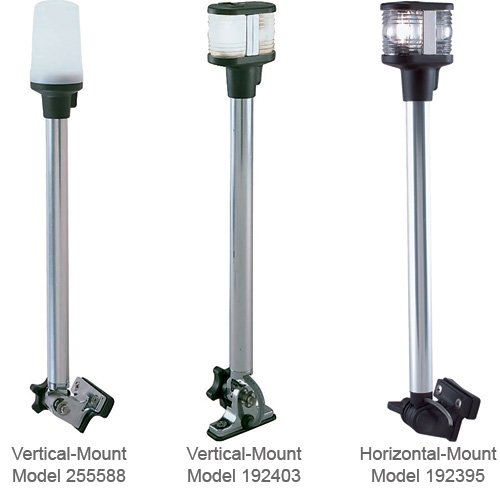
A 360-degree white all-around masthead light with two-mile visibility normally fulfills this requirement for most pleasure boats, but familiarize yourself with and follow the rule. Wire gauge, length of wiring, connections and battery condition can affect a light's performance. Follow manufacturer's instructions to ensure compliance with U.S. Coast Guard regulations. If you have one of the newer LED anchor lights, it may not be as bright as earlier lights. Be sure that the manufacturer specifies in writing that it meets USCG requirement.
Displaying a proper anchor light when anchored at night isn't merely a matter of law. It's a matter of safety for you and others. Even if the boat is in a known or designated anchorage area, dinghies and other boats may be traveling in that area and will need to know the location of your boat. People have been severely injured and killed because a skipper decided that he'd not burn an anchor light.
Following is Rule 30 of the Rules found here .
Rule 30 - Anchored Vessels and Vessels Aground
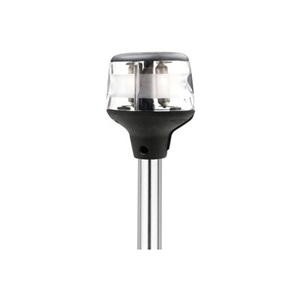
(a) A vessel at anchor shall exhibit where it can best be seen:
(i) in the fore part, an all-round white light or one ball;
(ii) at or near the stern and at a lower level than the light prescribed in subparagraph (i), an all-round white light.
(b) A vessel of less than 50 meters in length may exhibit an all-round white light where it can best be seen instead of the lights prescribed in paragraph (a) of this Rule.
(c) A vessel at anchor may , and a vessel of 100 meters and more in length shall, also use the available working or equivalent lights to illuminate her decks.
(d) A vessel aground shall exhibit the lights prescribed in paragraph (a) or (b) of this Rule and in addition, if practicable, [Inld] where they can best be seen;
(i) two all-round red lights in a vertical line;
(ii) three balls in a vertical line.
(e) A vessel of less than 7 meters in length, when at anchor not in or near a narrow channel, fairway or where other vessels normally navigate, shall not be required to exhibit the shape prescribed in paragraphs (a) and (b) of this Rule.
(f) A vessel of less than 12 meters in length, when aground, shall not be required to exhibit the lights or shapes prescribed in subparagraphs (d)(i) and (ii) of this Rule.
(g) A vessel of less than 20 meters in length, when at anchor in a special anchorage area designated by the Secretary, shall not be required to exhibit the anchor lights and shapes required by this Rule. [Inld]
Related Articles
The truth about ceramic coatings for boats.
Our editor investigates the marketing claims of consumer-grade ceramic coatings.
Fine-Tune Your Side Scan Fishfinder
Take your side-scanning fishfinder off auto mode, and you’ll be spotting your prey from afar in no time
DIY Boat Foam Decking
Closed-cell foam flooring helps make boating more comfortable. Here’s how to install it on your vessel
Click to explore related articles
BoatUS Editors
Contributor, BoatUS Magazine
Award-winning BoatUS Magazine is the official publication of Boat Owners Association of The United States. The magazine provides boating skills, DIY maintenance, safety, news and more from top experts.
BoatUS Magazine Is A Benefit Of BoatUS Membership
Membership Benefits Include:
Subscription to the print version of BoatUS Magazine
4% back on purchases from West Marine stores or online at WestMarine.com
Discounts on fuel, transient slips, repairs and more at over 1,200 businesses
Deals on cruises, charters, car rentals, hotel stays and more…
All for only $25/year!
We use cookies to enhance your visit to our website and to improve your experience. By continuing to use our website, you’re agreeing to our cookie policy.
Boat navigation lights rules and requirements at night Requirements in Canada
- Boating Safety Equipment
- Types of navigation lights
- Boat Navigation Lights rules and requirements at night
Powerboats navigation lights at night
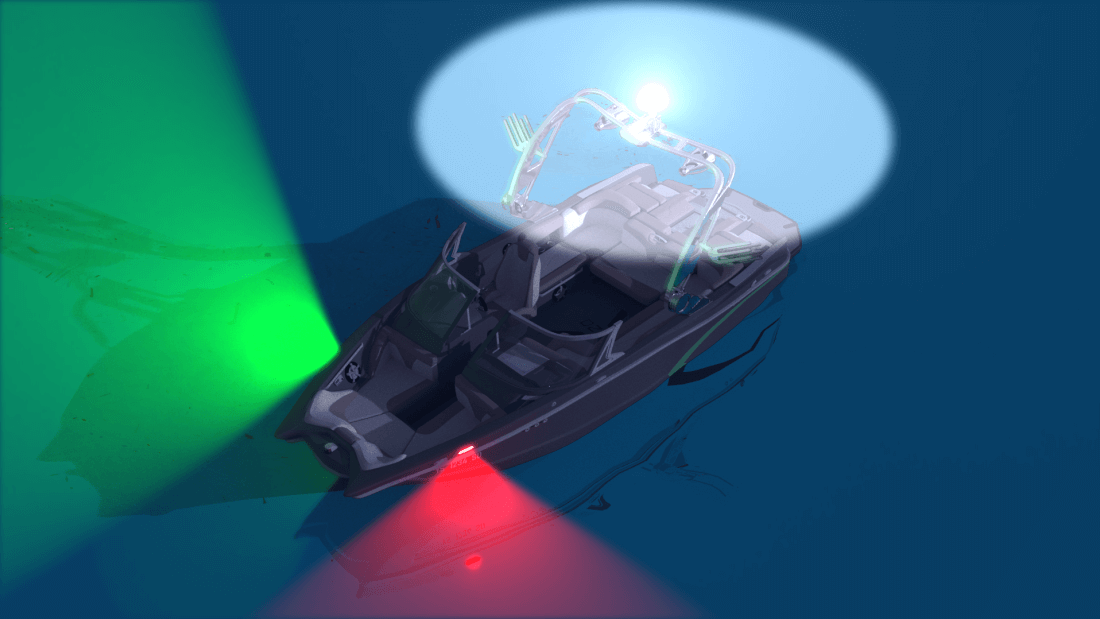
- Powerboats less than 12 meters (39,4") in length
- Powerboats of 12 meters (39,4") and over in length
- Powerboats at anchor
Properly lit sailboat at night
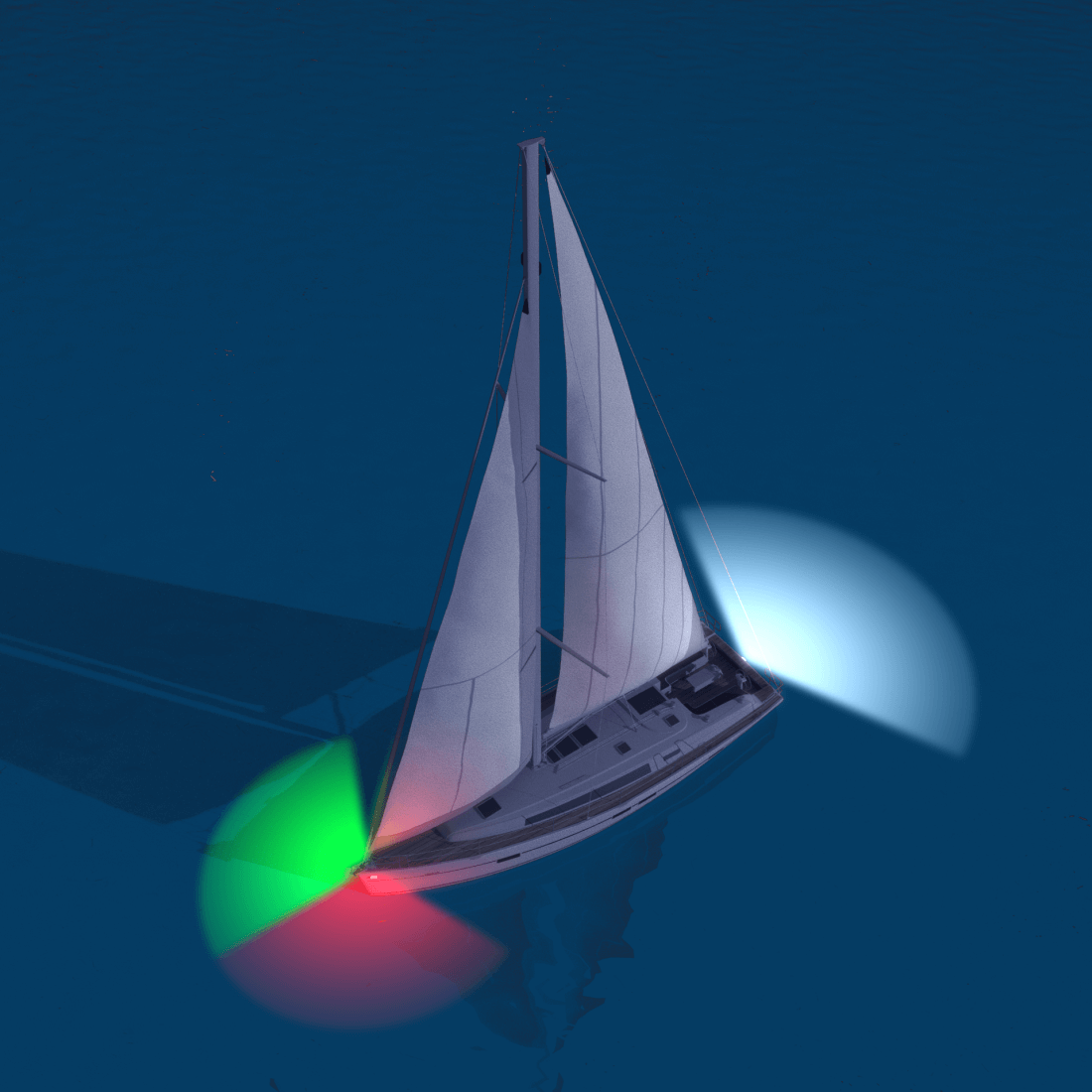
- Sailboats under 7 m (23’)
- Sailboats from 7 m (23’) to under 20 m (65’7”)
- Sailboats 20 m (65’7”) and over
- Sailboats operating under motor power
- Sailboats at anchor
Commercial boats navigation lights at night
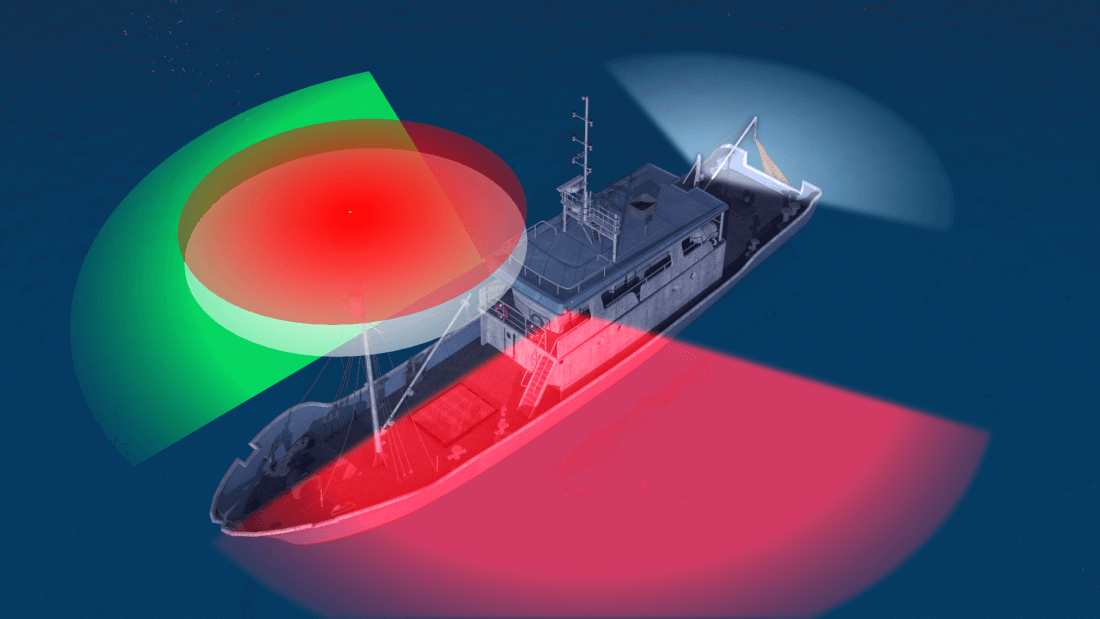
- Navigation lights for a vessel engaged in fishing
Navigation lights for a vessel engaged in trawling
Navigation lights for a power-driven vessel when towing.
- Navigation lights for a government vessel
Navigation lights for powerboats less than 12 meters (39,4") in length
A power driven vessel of less than 12 meters in length, and underway, may display, from sunset to sunrise:
All-round light (white) forward and,
Sidelights (red – green).

Navigation lights for powerboats of 12 meters (39,4") and over in length
A power driven vessel of 12 meters and over in length, and underway, may display, from sunset to sunrise:
Masthead light (white) forward,
Sternlight (white) and,
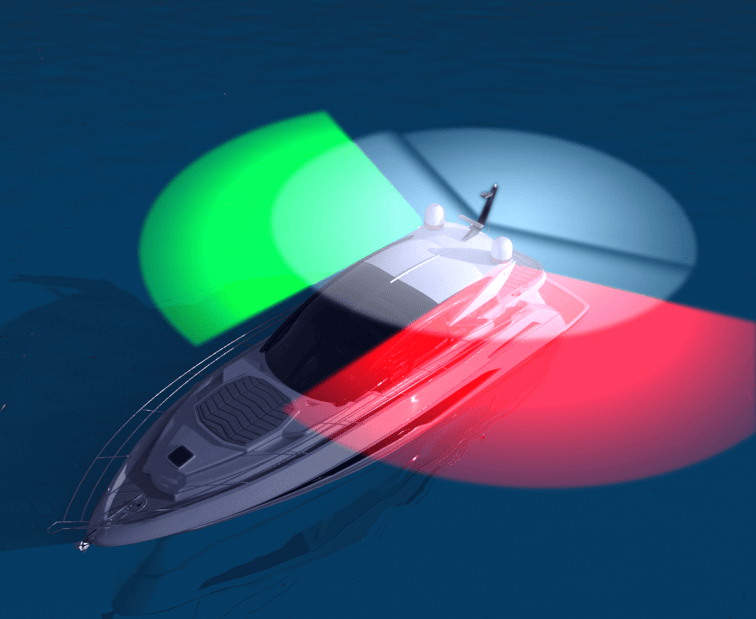
Navigation lights for powerboats at anchor
At anchor, the operator of a pleasure craft shall display, from sunset to sunrise, in the fore part, an all-round light . A powerboat anchored at night must display an all-round light .
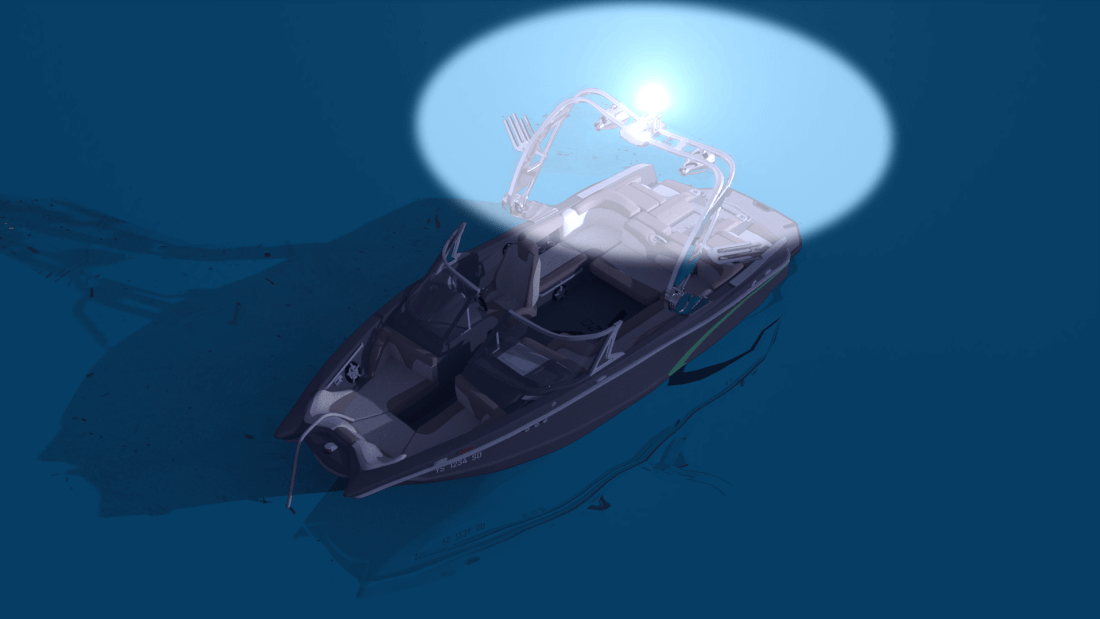
What is a properly lit sailboat at night?
Navigation lights for sailboats under 7 m (23’).
and underway, may display, from sunset to sunrise:
Sidelights (red – green) and,
Sternlight (white).
- 1 lantern, combining the sidelights and stern light above.

Navigation lights for sailboats from 7 m (23’) to under 20 m (65’7”)
- Sternlight , and
- 1 lantern, combining the sidelights and stern light above

Optional - A sailing vessel may exhibit at or near the top of the mast, two all-round lights in a vertical line: the upper one red and the lower one green. These lights are shown along with the sidelights and sternlight.
Navigation lights for sailboats 20 m (65’7”) and over

Navigation lights for sailboats operating under motor power
Sailboats are considered powerboats when they have the engines on - even if the sails are up.
Masthead light (white) forward,
Sternlight (white).
Navigation lights for sailboats at anchor
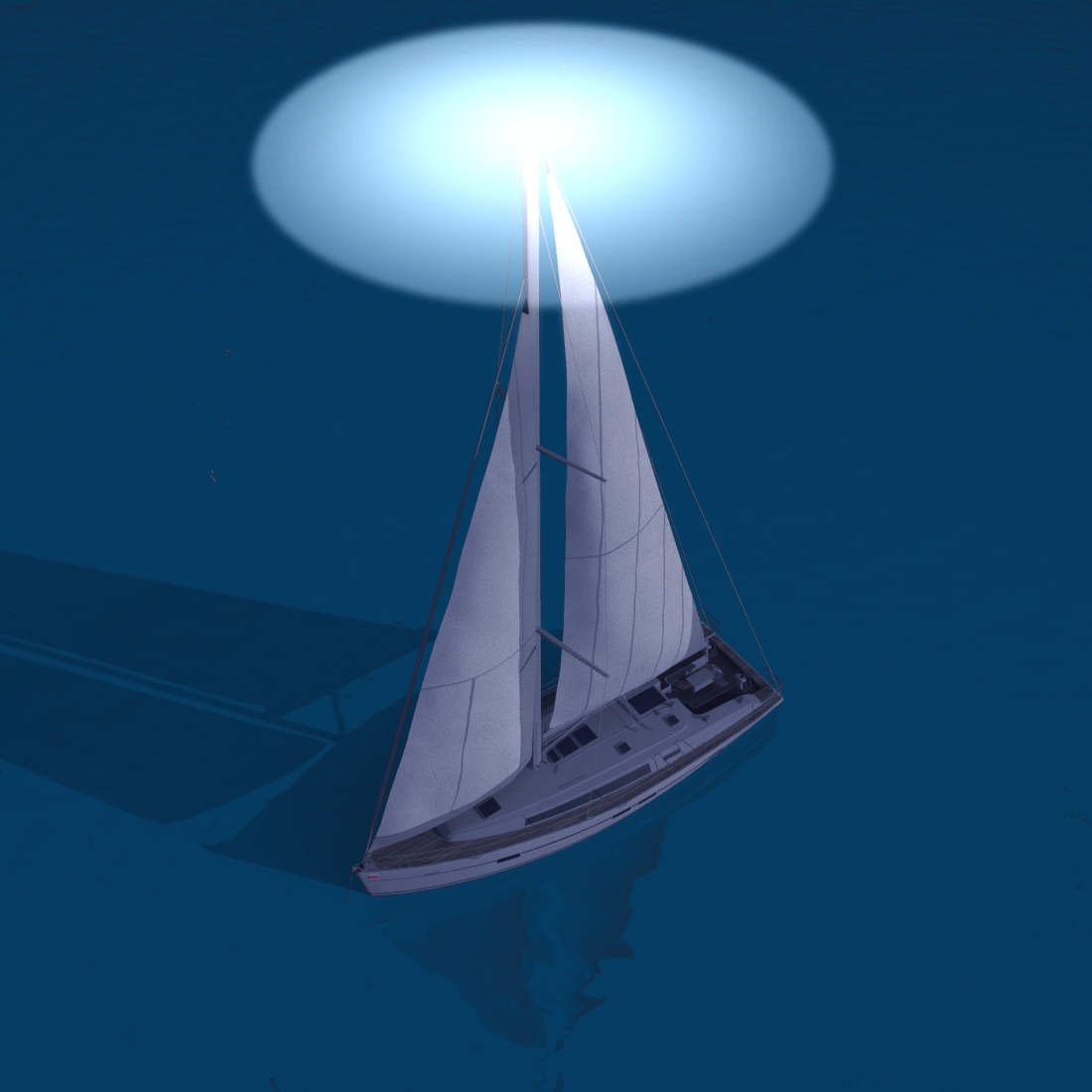
Navigation lights for kayak or canoe (human-powered vessels) at night
Navigation lights are also required for human-powered vessels (canoe, kayak) or for a sailing pleasure craft of less than 7 meters in length not under power. When underway, the operator shall, from sunset to sunrise, display, if practical, sidelights and a stern light, but if the operator cannot, he/she must have at hand , a flashlight or lighted lantern emitting a white light which must be lit in enough time to prevent a collision.
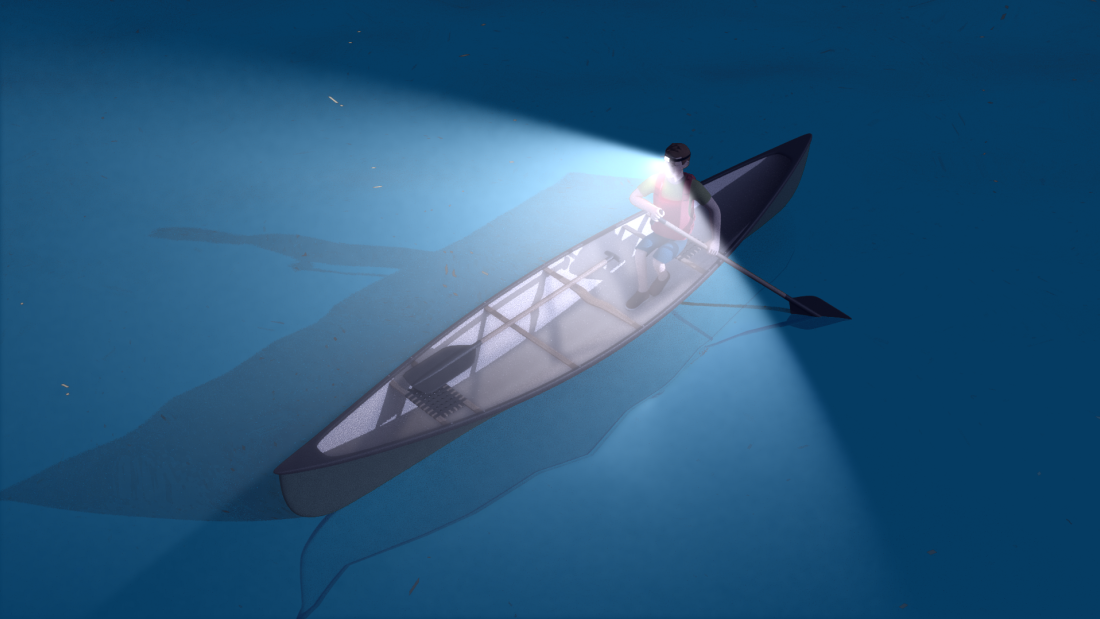
Navigation lights for a vessel engaged in fishing
Sidelights ,
Sternlight and
All-around light in a vertical line, the upper being red over white light. When making way through the water.

A vessel when engaged in trawling , which means dragging a dredge net or other fishing apparatus through the water, shall display:
Two all-round lights in a vertical line, the upper being green and the lower white. When making way through the water,
Sidelights and
Sternlight.
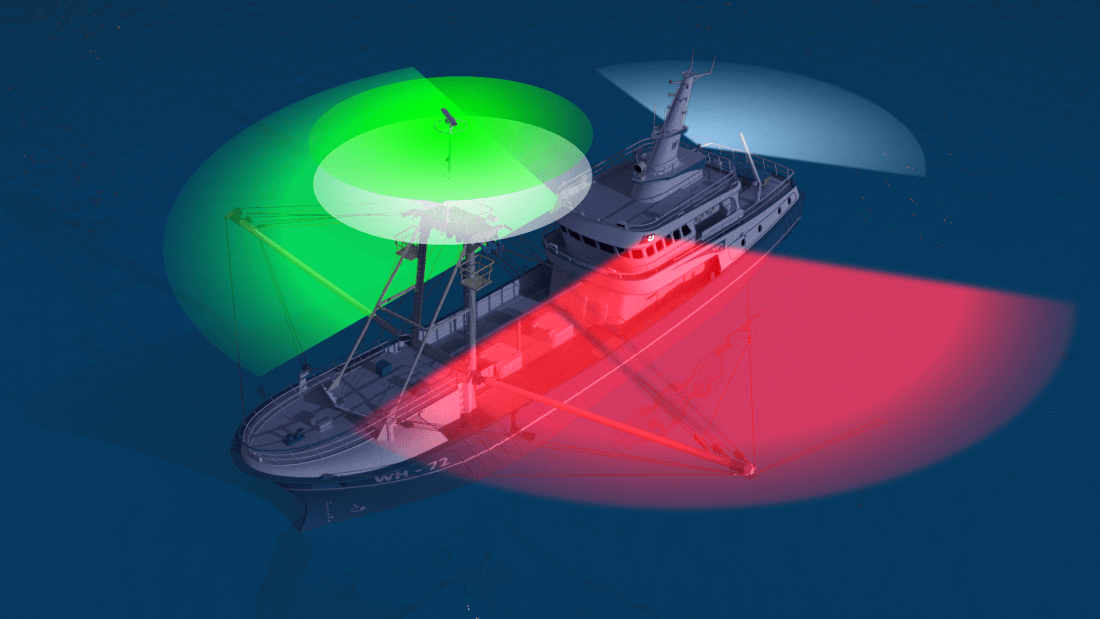
Navigation lights for a government vessel (Police boat)
Any government vessel or any vessel that is owned or operated by a harbor, river, county or municipal police force may display a blue flashing light to identify itself as such, in the following cases
When it is providing assistance in any waters to any vessel or other craft;
When it is engaged in law enforcement duties in Canadian waters.

Power-driven vessel when towing shall show sidelights, a sternlight, and a towing light in a vertical line above the sternlight, and two masthead lights in a vertical line. When the length of the tow, measuring from the stern of the towing vessel to the after end of the tow exceeds 200 meters, three such lights in a vertical line shall be displayed.
Apart from the regular navigation lights, when a boat tows another vessel in distress or in need of assistance for any reason, shall take all possible measures to show the relation between the towed vessel and the vessel doing the towing. A vessel towing must try to shine a light on the towing cable to make it as visible as possible, so that other boats do not come into contact with the cable.
A vessel being tow shall display sidelights and a sternlight. If it is not possible, it must display one all-around white light at each of the fore and aft ends.
Navigation lights for a power-driven vessel pushing another
A power-driven vessel, when pushing another , shall display the sidelights, a sternlight, and two superimposed masthead lights.
The vessel being pushed, and not part of a composite unit, must display its sidelights at the bow. When a vessel is pushing another, if both are connected in a rigid, composite unit, they will be regarded as one unit, thus showing the appropriate lights.
Navigation lights Examples
Sailing vessel seen from starboard side.

Sailing vessel seen from the front
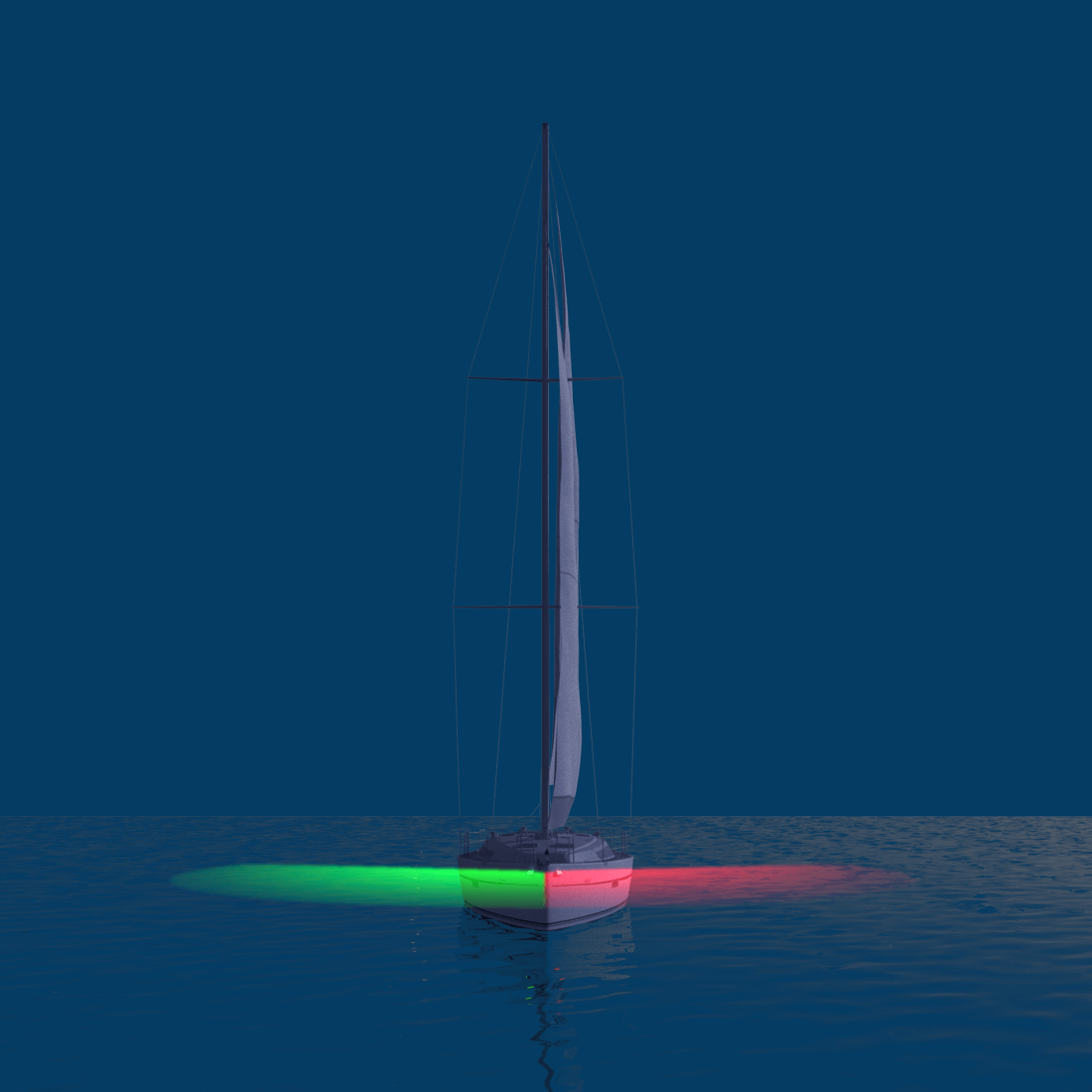
Power-driven vessel anchored

Power-driven vessel seen from starboard side

Power-driven vessel seen from port side

Power-driven vessel seen from the stern (back)
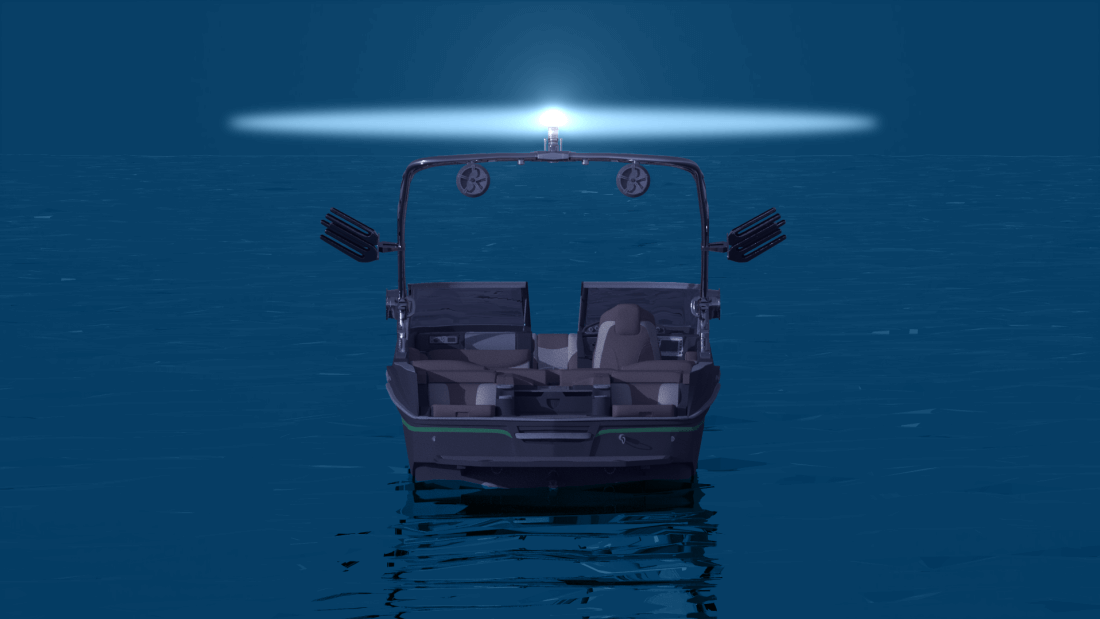
Would you like to learn more about boating safety and be able to drive a boat?
Aceboater s' boating safety course is accredited by Transport Canada to train students on the rules of navigation, buoys and their meanings, boating navigation lights, hazards, how to respond to emergency situations, boating laws and more.
Our course, once successfully completed, will give you the official pleasure craft operator card from Transport Canada, valid throughout North America.
I want my official Canadian boating license .

- Follow Ace Boater on YouTube
- Join Ace Boater on Facebook
- Contact Ace Boater
- AceBoater on Instagram
- AceBoater on X
Boating License & Pleasure Craft Operator Card online exam - Accredited Transport Canada
- Refund Policy
- Privacy Policy

Best Battery Powered Anchor Light for Boats
Disclosure This website is a participant in the Amazon Services LLC Associates Program, an affiliate advertising program designed to provide a means for us to earn fees by linking to Amazon.com and affiliated sites.
Anchor lights are essential for boaters who need to navigate in low-light conditions. These lights are mounted on the top of the boat’s mast or stern, and they help other boats identify the location of the anchored vessel.
Traditionally, anchor lights were powered by the boat’s electrical system, but battery-powered anchor lights have become increasingly popular in recent years. These lights are convenient because they don’t require wiring, and they can be easily moved around the boat.
Table of Contents
Best Battery Powered Anchor Lights
As an avid boater, I know the importance of having a reliable and bright anchor light to ensure safety and visibility on the water. Battery-powered anchor lights are a popular choice for boaters who want a hassle-free and portable option.
After researching and testing various products, I have compiled a list of the best battery-powered anchor lights on the market. These lights offer long-lasting battery life, durable construction, and bright illumination to keep you and your vessel safe.
Check out our top picks below.
Innovative Lighting LED White Case Stern Light with Suction Cup White Body With Screw on/Off Suction Cup

If you’re looking for a portable navigation light that’s easy to install and use, the Innovative Lighting LED White Case Stern Light with Suction Cup might be the perfect solution for you.
- The molded one-piece white body construction ensures durability and longevity.
- With 90% less energy consumption than incandescent lights, this navigation light is energy-efficient.
- The sealed heavy-duty on/off switch makes it easy to turn on and off.
- The light requires four AA batteries that are not included.
- The suction cup mount might not adhere well to rough or textured surfaces.
- The light might not be bright enough for larger boats or in very dark conditions.
I recently used the Innovative Lighting LED White Case Stern Light with Suction Cup on my small boat, and I found it to be a reliable and convenient navigation light. The one-piece white body construction is sturdy and well-made, and it can withstand some rough handling and exposure to the elements.
I was impressed by the energy efficiency of this light, as it uses only 90% less energy than incandescent lights. This means that I can use it for longer periods without worrying about draining my batteries too quickly.
The sealed heavy-duty on/off switch is also a great feature, as it makes it easy to turn the light on and off even when my hands are wet or slippery. I appreciate the convenience of not having to fiddle with small switches or buttons.
However, I did notice that the suction cup mount might not adhere well to rough or textured surfaces, so I had to make sure that I cleaned the surface before attaching the light. Also, the light might not be bright enough for larger boats or in very dark conditions, so it’s important to consider your specific needs before purchasing.
Overall, I would recommend the Innovative Lighting LED White Case Stern Light with Suction Cup to anyone looking for a portable and easy-to-use navigation light. It’s a reliable and energy-efficient choice that can make your boating experience safer and more enjoyable.
Sebnux Battery Boat Light Bow and Stern Portable Battery Power Boat Navigation Light for Pontoon and Small Boat (Black)

If you’re looking for a reliable and portable battery-powered boat navigation light, the Sebnux Battery Boat Light is a great option to consider.
- The creative circuit design provides more than 200 hours of running time for single use on C-Cell batteries (C-Cell Battery Purchase Separately).
- The advanced optical refraction technology with bright LED light source gives extra safety to sailing trips, even during daytime or dark night.
- The C-clamp aluminum alloy mounting base is easy to install and move by boaters, making it a versatile option for kayaks, small boats, or pontoons.
- The shock-proof housing with sealed waterproof design performs well on water resistance and lasts a long working time, but it’s not completely waterproof.
- The battery-powered design makes it portable, but it also means you’ll need to keep spare batteries on hand.
- The lights are not very sturdy and may not hold up well in rough conditions.
In my experience, the Sebnux Battery Boat Light is a reliable and easy-to-use option for boaters who need a portable navigation light. The C-clamp mounting base is easy to install and move around as needed, and the bright LED lights provide extra safety during sailing trips.
However, it’s important to note that the lights are not completely waterproof, so you’ll need to take care when using them in wet conditions. Additionally, the battery-powered design means you’ll need to keep spare batteries on hand, which may be a hassle for some boaters.
Overall, I would recommend the Sebnux Battery Boat Light to anyone looking for a portable and reliable navigation light for their boat.
Seachoice Bi-Color Portable Battery-Operated Boat Navigation Light Stern Mount

If you’re looking for a budget-friendly option for a battery-powered anchor light, the Seachoice Bi-Color Portable Battery-Operated Boat Navigation Light Stern Mount could be a good option for you.
- The adjustable clamp makes it easy to mount horizontally on your boat.
- The watertight construction is designed to withstand corrosion.
- The light can be easily removed for storage when not in use.
- The incandescent bulb is not as energy-efficient as LED bulbs.
- The plastic clamp is flimsy and may not hold up well over time.
- The light may not be as bright as other options on the market.
In my experience, the Seachoice Bi-Color Portable Battery-Operated Boat Navigation Light Stern Mount is a decent option for those on a tight budget. The adjustable clamp makes it easy to mount horizontally on your boat, and the watertight construction is a nice feature for a light in this price range. However, the incandescent bulb is not as energy-efficient as LED bulbs, and the plastic clamp is a bit flimsy and may not hold up well over time.
Overall, the Seachoice Bi-Color Portable Battery-Operated Boat Navigation Light Stern Mount is a good option for those who need a budget-friendly anchor light for their boat. However, if you’re looking for a brighter light or a more durable clamp, you may want to consider other options on the market.
Buying Guide
When it comes to choosing the best battery-powered anchor light, there are a few important features to consider. Here are some key factors to keep in mind:
One of the most important features to consider when choosing an anchor light is its brightness. A bright light will ensure that your boat is visible to other vessels, even in low-light conditions. Look for lights that have a high lumen output, as these will be the brightest.
Battery Life
Another important factor to consider is the battery life of the anchor light. You want a light that will last for a significant amount of time on a single charge, so you don’t have to worry about it running out of power while you’re out on the water. Look for lights that have a long battery life, and consider investing in a light that comes with a spare battery.
Since anchor lights are typically exposed to the elements, it’s important to choose a light that is durable and can withstand harsh conditions. Look for lights that are made from high-quality materials and are waterproof, so you don’t have to worry about them getting damaged in the rain or spray.
Mounting Options
Finally, consider the mounting options for the anchor light. Some lights are designed to be mounted on a pole or mast, while others can be mounted directly onto the boat. Consider your specific needs and preferences when choosing a light, and make sure it comes with the necessary mounting hardware.
By keeping these factors in mind, you can choose the best battery-powered anchor light for your boat that will provide reliable and long-lasting illumination.

Check Out The Following Also:
- Best AGM Battery for Power Backup: Top Picks for 2023
- Best Battery Powered Fan for Camping
- YONHAN Battery Charger 10-Amp Review
- Himassi12V 100Ah LiFePO4 Battery Review


- ACCESSORIES
- Deck Lights
- Accent Lights
- Spreader Lights
- Transom Lights
- Flood Lights
- Accessories
- All Marine Lighting
- View Our Marine Catalog
- Cube Lights
- LED Headlights
- Rock Lights
- LED Flexible Strip Lights
- Linear Channel Lights
- Handheld Spot Lights
- Search Lights
- Vehicle Specific Mounts
- LED Speaker Rings
- Flashlights
- 2100 Marine Silicone Sealant
- Replacement Parts
- 4 Passenger Golf Cart Kits
- Limo Golf Cart Kits
- Golf Cart Accessories
- View our Marine Catalog
- Warranty Registration Form
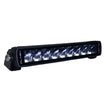
- Dealer Application
- Credit Card Form
- Dealer Displays
- Price Sheet
Your cart is empty
What Lights Are Required On A Boat At Night?
Feb 1, 2022
By Stephen Plash
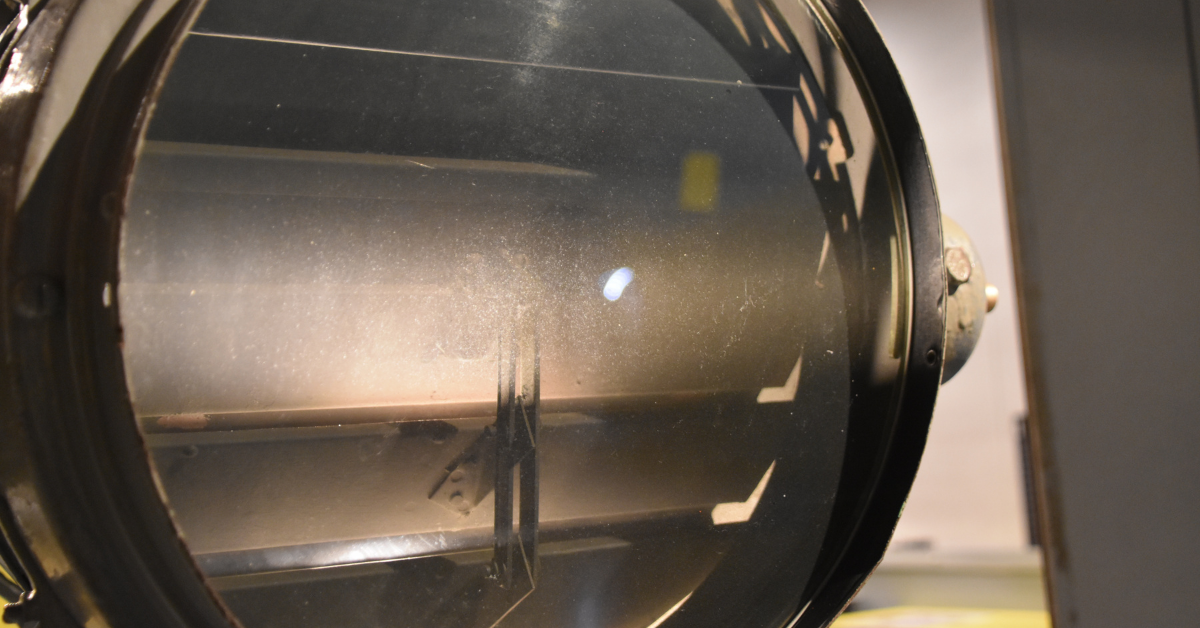
Now that 2022 is here, the boating season is fast approaching. This means that it’s time to start preparing your boat and ensuring you have all the necessary gear and that all boat light requirements are met. The requirements depend on the size of the vessel, and PlashLights offers marine lighting of all kinds, including:
- Accent & Deck Lights
- Marine Light Bars
- Spreader & Flood Lights
- Underwater/Transom Lights
- Handheld LED Spotlights
We want to help you make sure your vessel is ready to go for your next boat day!
Boat Light Requirements
One of the foremost boat light requirements is navigation lighting. The type of light requirements changes for each vessel because the bigger the boat, the more powerful and visible the lights need to be.
Powerboats and Sailboats When Under Power
One of the basic rules of navigation lights is that sidelights, a masthead light, and a stern light are required.
- Powerboats less than 12m (39.4’) can substitute a single all-around light for separate masthead lights and a stern light.
- Powerboats and sailboats under power that are less than 20m (65.7’) can substitute a single bi-color light for the sidelights.
Note that Sailboats operating under engine power are considered power-driven and must follow the “Under Power” rules.
Sailboats When Under Sail
Sidelights and stern light are the basics required. There are variations to this rule that are also allowed.
- Sailboats less than 20m (65.7’) can substitute a tricolor light for separate sidelights and stern light. A bi-color light with a stern light may also be substituted.
- Sailboats less than 7m (23’) can exhibit lights like explained above. An alternative that is also accepted is to have a ready-at-hand electric torch or lighted lantern (flashlight) that shows white lights in enough time to prevent a collision.
- Sailboats, during the day, that are under power with sails hoisted are required to show a motoring cone with its apex pointed down.
Oar-Driven and Paddled Vessels (Rowboats, Kayaks, Canoes)
- Vessels that are rowed or paddled may exhibit the lights for a sailboat. Keep a ready-at-hand electric torch or flashlight that shows white light in enough time to prevent a collision.
Vessels at Anchor
- When a vessel is anchored at night outside a designated anchorage, an all-around light visible from at least 2m is required.
- During the day, an anchored vessel must display a black anchor ball.
Minimum Visibility Range
- Boats less than 12m (39.4’), sidelights are required to be visible for at least 1nm. The rest of the lights must be visible from at least 2nm.
- Vessels less than 20m (65.7’), a masthead light must be visible for 3nm. All other lights must be visible from 2nm.
- Boats over 20m (65.7’) but less than 50m (164’) should display a masthead light visible for 5nm. The rest of the lights should be visible for 2nm.
Note that a copy of the Navigation Rules and Regulations must be kept on board at all times for boats greater than 20m (65.7’).
Shop With Us
While regulations require boaters to have the standard U.S. Coast Guard-approved lights, our PlashLights team offers additional marine lighting of all kinds. Our LED lighting systems are not only top quality and come with a lifetime warranty, but they also keep you safe and visible to other boaters while you navigate darker waterways. Much like high beams while driving, we recommend turning off any light bar or spotlight when you see other boats so you do not blind or obstruct other boaters.
Each of our marine lights is meant to add to the safety of your boating experience, especially at night. With the legally required lights, plus even one of our LED light bars , you’ll be one of the brightest and safest boats on the water.
Contact PlashLights today for more information on all our marine lighting or our marine LED light bars!
Reading next

Choosing the Correct Wire Gauge for your 12V LED Lights
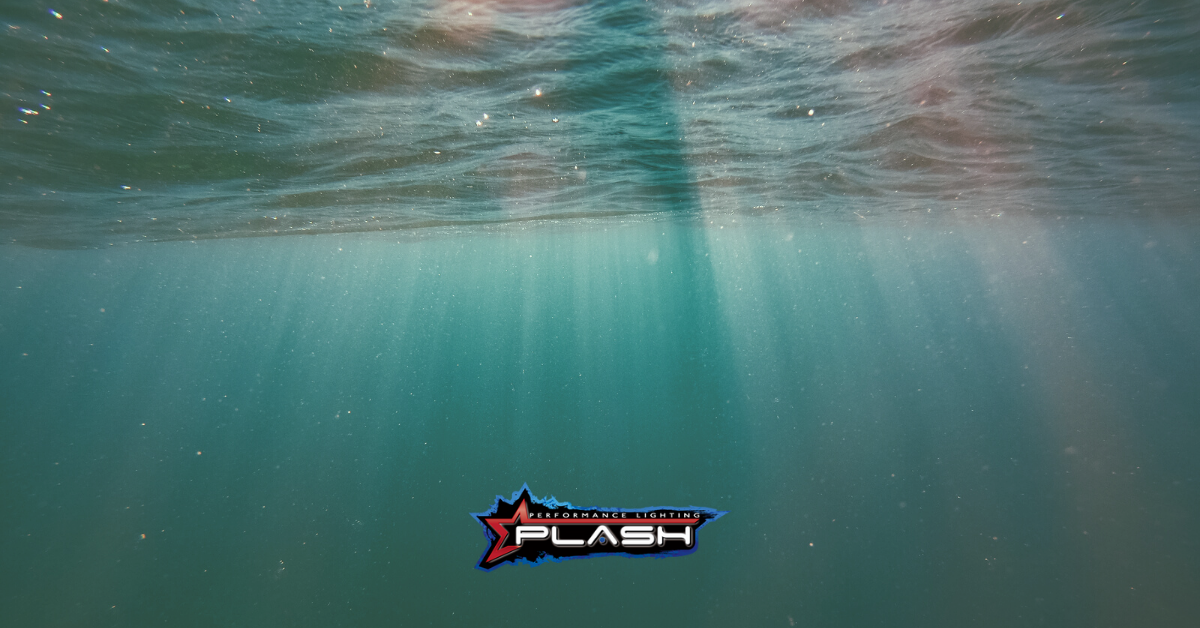
Benefits of Underwater Lights
Leave a comment
This site is protected by reCAPTCHA and the Google Privacy Policy and Terms of Service apply.

- Flashlights
- Path Lights
- Bike Lights

- Safety Lights
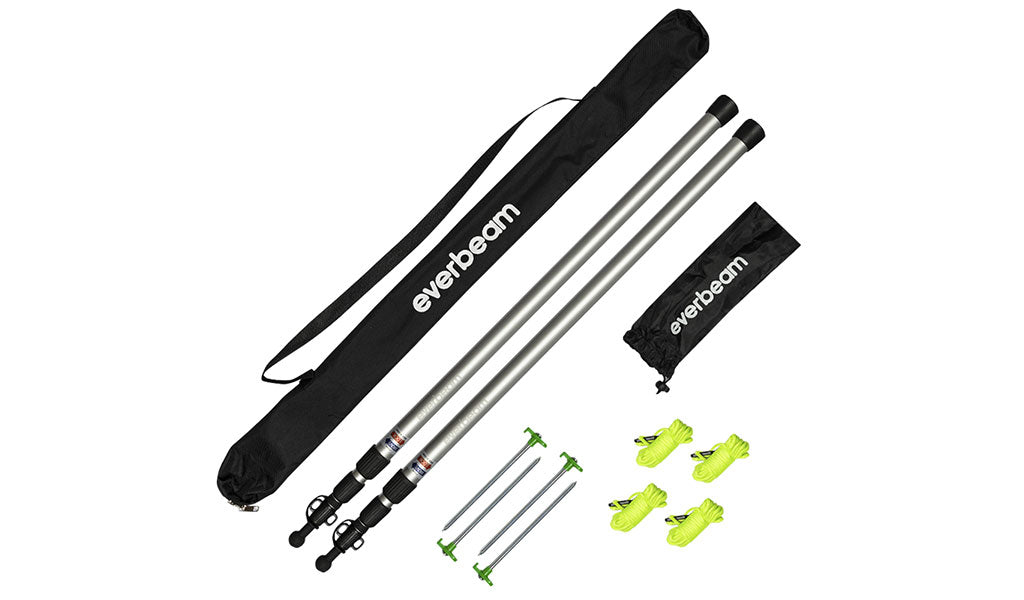
- Accessories
- Bike Cleats
May 20, 2022 10 min read
What is an Anchor Light? A Clear Explanation

If you're new to boating, you may have heard the term "anchor light" and wondered what it means. Simply put, an anchor light is a type of navigation light that is used to indicate the position of a stationary vessel at anchor. It is required by law in most countries and is an important safety feature for boaters who anchor at night.
Understanding anchor lights is an essential part of boating safety. Navigation lights are used to signal the position and movement of a vessel to other boats, and anchor lights are specifically designed to signal that a vessel is anchored and not moving. There are different types of navigation lights, but the anchor light is the only one that is required to be displayed when a boat is at anchor.
Key Takeaways
- Anchor lights are navigation lights that indicate the position of a stationary vessel at anchor.
- Understanding anchor lights is essential for boating safety.
- Anchor lights are required by law and are an important safety feature for boaters who anchor at night.
Understanding Anchor Lights
An anchor light is a type of light that is used to signal the location of a vessel at anchor. It is typically a white light that is mounted at the top of the vessel's mast. The purpose of the anchor light is to make the vessel visible to other vessels in the vicinity, especially at night.
The anchor light is required by law when a vessel is at anchor between sunset and sunrise. The light must be visible from all directions and must be of sufficient intensity to be seen by other vessels at a distance of at least two nautical miles.
The all-round white light is the most common type of anchor light. It is a white light that shines in all directions. The all-round white light is required for vessels less than 50 meters in length, while vessels over 50 meters in length must also display an additional masthead light.
In summary, the anchor light is a vital safety feature that helps to prevent collisions between vessels at anchor. The all-round white light is the most common type of anchor light, and it is required by law for vessels at anchor between sunset and sunrise.
Types of Navigation Lights
Navigation lights come in different types , each serving a specific purpose on a vessel. In this section, we will explore two types of navigation lights: sidelights and stern lights.
Sidelights are navigation lights that are mounted on the port and starboard sides of a vessel. These lights are typically red and green, respectively, and are used to signal the direction in which the vessel is traveling. The red light is on the port side, and the green light is on the starboard side.
When viewed from the front of the vessel, the red light should be on the left, and the green light should be on the right. Sidelights are essential when navigating in low visibility conditions, such as at night or in foggy weather.
Stern Lights
Stern lights are navigation lights that are mounted on the stern or back of a vessel. These lights are typically white and are used to signal the presence of a vessel to other vessels. Stern lights are also used to indicate the direction in which a vessel is traveling.
When viewed from the front of the vessel, the stern light should be in the center. Stern lights are crucial when navigating in low visibility conditions, such as at night or in foggy weather.
In conclusion, understanding the different types of navigation lights is essential for safe and effective navigation on a vessel. Sidelights and stern lights are just two examples of the many types of navigation lights available, each playing a critical role in ensuring the safety of all those on board.
Anchor Light Visibility
When it comes to anchor lights, visibility is key. Your anchor light must be visible from all directions, including dead ahead, and must be an unbroken light. This means that the light must be visible at all times and cannot be obstructed by anything on your vessel.
To ensure maximum visibility, it is recommended to mount your anchor light as high as possible on your vessel. This will allow the light to be seen from a greater distance and reduce the risk of it being obstructed by anything on your vessel.
It is also important to choose a light with a brightness that is appropriate for the size of your vessel. A light that is too dim may not be visible from a sufficient distance, while a light that is too bright may be blinding to other vessels.
Finally, it is important to regularly check and maintain your anchor light to ensure that it is functioning properly and is visible at all times. This includes checking the bulb, wiring, and any other components that may affect the light's visibility.
By following these guidelines, you can ensure that your anchor light is visible and compliant with regulations, helping to keep you and other vessels safe while at anchor.
Anchor Lights on Different Vessels
When it comes to powerboats , the type of anchor light used depends on the size of the vessel. Small power boats, such as those under 12 meters, typically use a single all-around white light. This light must be visible from 360 degrees and must be placed at the highest point on the boat. Larger power boats, on the other hand, may require multiple anchor lights, including a masthead light and a stern light. These lights are typically required for boats that are over 20 meters in length.
Sailboats also require anchor lights, but the type of light used depends on whether the boat is under sail or at anchor. When a sailboat is under sail, it is required to display a combination of lights that include a red and green sidelight and a white stern light. When the sailboat is at anchor, it is required to display an all-around white light that is visible from 360 degrees.
Sailing vessels that are over 50 meters in length may require additional anchor lights, such as a masthead light and a stern light. These lights are typically required for larger vessels to ensure that they are visible to other boats in the area.
Overall, regardless of the type of vessel, it is important to ensure that the anchor lights are working properly and are visible to other boats in the area. This is especially important at night or in low visibility conditions where it may be difficult to see other boats.
Regulations and Requirements
Inland rules.
If you are operating a vessel on inland waters, it is important to know the regulations and requirements for anchor lights. The Inland Rules specify that any vessel at anchor must display a white light visible for 360 degrees around the vessel. This light must be placed where it can best be seen and must be lit from sunset to sunrise.
Rule 30 and COLREGS
If you are operating a vessel on international waters, you must comply with the International Regulations for Preventing Collisions at Sea (COLREGS). Rule 30 of the COLREGS specifies that any vessel at anchor must display a white light visible for 360 degrees around the vessel. This light must be placed where it can best be seen and must be lit from sunset to sunrise.
According to the Code of Federal Regulations (CFR), all vessels operating on United States waters must comply with the requirements for anchor lights. The United States Coast Guard (USCG) enforces these regulations and can issue fines for non-compliance.
In summary, if you are operating a vessel at anchor, it is important to understand the regulations and requirements for anchor lights. Whether you are on inland waters or international waters, you must comply with the appropriate rules and regulations. By displaying a white light visible for 360 degrees around your vessel, you can help ensure the safety of yourself and others on the water.
Technical Aspects of Anchor Lights
When it comes to anchor lights, LED lights are the most popular option due to their energy efficiency and long lifespan. They are also durable and can withstand harsh weather conditions. It is important to choose LED lights that are specifically designed for marine use to ensure they meet safety standards and regulations.
Battery and Power
Anchor lights are typically powered by a boat's battery. It is important to ensure that the battery is in good condition and has enough power to last throughout the night. To conserve power, it is recommended to use a low-wattage LED light and to turn off unnecessary electronics. It is also important to regularly check the wiring and connections to ensure they are secure and not corroded.
Overall, anchor lights are an essential safety feature for boats, especially when anchored in busy or low visibility areas. Proper installation, maintenance, and testing are crucial to ensure they function properly when needed. By choosing LED lights and ensuring the battery and wiring are in good condition, you can have peace of mind knowing your anchor light will reliably guide you through the night.
Troubleshooting Anchor Light Issues
If you're having issues with your anchor light , there are several things you can try to troubleshoot the problem. Here are some common issues and solutions:
Light is Blocked
If your anchor light is blocked by something, it won't be visible to other boats and could be a safety hazard. Check to make sure there is nothing obstructing the light, such as a sail or other equipment. If the obstruction is unavoidable, you may need to move the light to a different location.
Light is Disabled
If your anchor light is not turning on, it may be disabled. Check to make sure the light is properly connected and that the wiring is not damaged. If the wiring is damaged, it will need to be repaired or replaced.
Light is Enabled but Not Working
If your anchor light is turned on but not working, there may be an issue with the bulb or the wiring. Check to make sure the bulb is securely in place and that the wiring is not damaged. If the bulb is burned out, it will need to be replaced.
Light is Loading Slowly
If your anchor light is taking a long time to turn on, there may be an issue with the power source or the wiring. Check to make sure the power source is strong enough to support the light and that the wiring is not damaged. If the power source is weak, you may need to use a different power source or install a new battery.
Reference ID
If you're still having issues with your anchor light, consult the manufacturer's reference ID or user manual for further troubleshooting steps. You may also want to consult with a professional electrician or boating expert for assistance.
Safety Considerations
When it comes to boating, safety should always be your top priority. An anchor light is an important safety feature that helps other boaters see you in low-light conditions. By law, if your boat is anchored or moored between sunset and sunrise, you must display an anchor light.
Not only does an anchor light help prevent collisions, it also signals to other boaters that your vessel is restricted in its maneuverability. This is especially important in narrow waterways or areas with heavy boat traffic.
In addition, reduced visibility due to weather conditions can make it difficult for other boaters to see your vessel. An anchor light can help you avoid collisions by making your boat more visible.
When displaying an anchor light, it's important to ensure that it is visible from all directions. The light should be placed at the highest point on your boat and should not be obstructed by any equipment or other objects.
By following these safety considerations, you can help ensure a safe and enjoyable boating experience for yourself and other boaters on the water.
Additional Resources
If you want to learn more about anchor lights, there are many resources available to you. Here are a few that you may find helpful:
- US Coast Guard Navigation Rules and Regulations Handbook : This handbook is a comprehensive guide to the rules and regulations governing navigation on US waters. It includes a section on anchor lights and provides detailed information on when and how they should be used.
- BoatUS : BoatUS is a membership organization that provides a variety of resources and services to boaters. They have a helpful article on anchor lights that explains the different types of lights available and how to choose the right one for your boat.
- West Marine : West Marine is a popular boating supply store that carries a wide range of boating products, including anchor lights. Their website has a helpful guide to choosing and installing anchor lights, as well as a selection of lights to choose from.
- Anchor Light Automation Tools : There are several automation tools available that can help you manage your anchor light. For example, the Anchor Light Timer is a device that automatically turns your anchor light on and off at the appropriate times, saving you time and effort.
Overall, there are many resources available to help you learn more about anchor lights and how to use them effectively. Whether you are a boater or a web developer, there is something for everyone.
Frequently Asked Questions
What is the purpose of an anchor light on a boat.
An anchor light is a white light that is used to help other boats identify your boat when it is anchored at night. It is required by law to be displayed between sunset and sunrise, and it should be visible from all directions.
What are the height requirements for an anchor light?
The height requirements for an anchor light depend on the length of your boat. For boats less than 50 feet, the light should be at least 3.3 feet above the highest point of the boat. For boats over 50 feet, the light should be at least 6.6 feet above the highest point of the boat.
What is the difference between an anchor light and a masthead light?
An anchor light is used when a boat is at anchor, while a masthead light is used when a boat is underway. An anchor light is a white light that is visible from all directions, while a masthead light is a green and red light that is visible only from the front and back of the boat.
Do I need to have an anchor light on my boat?
Yes, you are required by law to have an anchor light on your boat if you are anchoring at night. It is important to have an anchor light to help prevent collisions with other boats.
What are the best types of anchor lights for boats?
The best types of anchor lights for boats are LED lights, as they are energy-efficient and have a long lifespan. They are also bright and visible from a long distance.
What are the regulations for emergency anchor lights on boats?
Emergency anchor lights are required to be displayed when a boat is in distress and needs assistance. The light should be visible from all directions and should be a white light.
Boat Navigation Light Rules
Does your boat meet the boat navigation light rules? Check in here to learn all about those green and red boat lights.
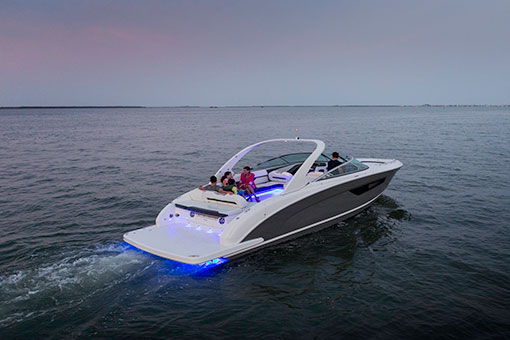
Basic boat navigation light rules are set by the U.S. Coast Guard, and may be augmented by state or local requirements as well. You can look at all of the USCG navigational rules , but we can set out the basics regarding what lights are required on a boat here:
- All boats under seven meters which cannot exceed seven knots – Sail and power boats of this size can display an all-around white light, and may display green and red side lights as well.
- Powerboats under 12 meters – Must show an all-around white light visible from 360 degrees (generally called a masthead light) and red and green side lights visible at 112.5 degrees placed above the hull and at least one meter below the masthead light. Or, they may have a masthead light visible at 225 degrees plus a stern light visible at 135 degrees. Side lights must be visible from one nautical mile, and masthead and stern lights must be visible from two nautical miles.
- Sailboats under 12 meters – Must show green and red side lights (meeting the same requirements as those found on a powerboat) and a white stern light, or, may show a tri-colored masthead light.
- Powerboats up to 20 meters – Side lights, masthead, and stern lights are all required as listed above; side and stern lights must be visible to two nautical miles and masthead lights to three nautical miles.
- Sailboats up to 20 meter – Must show side lights and a white stern light or tricolored masthead light as listed above; all must be visible to two nautical miles.
- All boats over 20 meters – Must show lights as listed above but masthead lights must be visible at five nautical miles.
- All boats at anchor – An all-around white light visible for at least two nautical miles must be displayed.
Now that you know what lights need to be on a boat in reduced visibility, it’s important to remember a few other key points that people sometimes forget.
- First off, note that if a sailboat is operating with an engine running, it’s considered a powerboat under the rules and must be lighted accordingly.
- Secondly, remember that it’s your personal responsibility to make sure these lights are operational. Just having them aboard isn’t enough so before every trip, it’s a good idea to flip the switches and verify that everything is working properly.
- Third, if your boat has docking lights leave them off while operating in open waters. Boats don’t have headlights and those with forward-facing white beams are intended to be illuminated while docking, only.
- Finally, check your state and locality rules and make sure you meet these as well, because in some areas there may be additional requirements.
Where to Put Navigation Lights on a Boat
Most of the time, deciding where to put navigation lights on a boat has already been done for you. Modern boats will leave the factory with proper lighting already installed and you won’t have to worry about it. If you have to replace any lights, the safest move is to simply mimic the original placement and type.
When it comes to small craft, however, like jon boats or dinghies , the boat may not come equipped with any lights at all. In fact, they may not have the electrical systems and switch panels necessary to run lights, should you want to add them. In this case you’ll want to get portable lights.
Portable navigation lights which are battery-powered may be attached to the boat with clamps, suction cups, or bases that fit into fishing rod holders. These work just fine, as long as you make sure the batteries are fresh and carry a spare set. To some degree, where you put them may depend on the boat itself and what mounting options are available. That said, if you use portable green and red boat lights, they should be placed facing forward at the bow of the boat as close to the centerline as possible. White all-around lights should be at or near the stern if practical, but in this case the most important thing is to make sure they’re clearly visible. A light on a short pole can easily be blocked from view by a person or obstruction, so it needs to be elevated higher than anything and anyone on the boat.
Following the boat navigation light rules and requirements isn’t just necessary under the law, it’s also an important aspect of safe boating. We all want to make sure our days — and nights — spent aboard a boat are as safe as possible, so be sure your boat’s navigation lights are up to snuff.
To make sure you’re up to date on all aspects of boating safety, be sure to check out our Boating Safety Guide .
Read Next: Boat Safety Checklist & Safety Equipment

Join Our Newsletter!
Get community news, buying bargains, and how-to guides at your fingertips.

Boat Navigation Light Rules Explained (For Beginners)
Boat navigation light rules can be a little difficult for newcomers to understand. This is probably because these light rules can change depending on a wide variety of factors.
Failing to comply with these rules can leave you open to enforcement violations as well as lawsuits.
Also, knowing these rules will help keep you and other boaters safe while out on the water, so you must learn and remember them.
Here’s everything you should know about the boat navigation light rules.
Table of Contents

Why Have Boat Navigation Light Rules At All
Boat navigation light rules help boaters communicate with each other. They also help to determine who has the right of way. This is important as it determines what actions boats will take as they pass one another.
Without these guidelines, there would be many more accidents out on the water as people wouldn’t know how to interact.
Remember, when you’re out on the open water, there aren’t any designated lanes to follow, and without rules, boaters can easily become confused about which way they should turn or whether or not they should even turn at all.
On top of this, these rules help establish methods for boaters to tell each other when they’re anchored or when they’re in distress. Use your lights correctly when you need help, and you’re much more likely to get it.
When do I Need to Follow Boat Navigation Light Rules?
Light rules apply any time between sunset and sunrise. They also apply any time visibility is low.
An example of this could be during foggy or rainy weather.
A more unusual example of this could be during a solar eclipse. Basically, if you feel that having the lights on will help others see you better, it’s a good idea to turn them on.
The Different Light Rules by Boat and Size
Different types of boats will have different light rules that they need to follow. These sets of rules are broken down based on whether the boat is a sailboat or a powered boat.
Once this is established, the rules are then broken down by size.
The different sizes to consider are boats shorter than 39.4 feet, boats sized between 39.4 and 65.6 feet, and boats greater than 65.6 feet.
If you’re wondering why the numbers are so precise, it’s because this is the conversion from meters. 39.4 feet equals 12 meters, and 65.6 feet equals 20 meters.
Generally, all boats will have a red light on their port side and a green light on their starboard side. To put it in plain English, if you’re in the driver’s seat, the red light goes on the left, and the green light goes on the right.
A white light should be at the stern of the boat. The stern is the rear of the boat.
Powered Boat Light Placement

Here are the lights you’ll need when operating a powered boat, depending on the size of the boat you’re operating.
- Boats less than 12 meters or 39.4 feet long:
You’ll need one red light and one green light at the front port and starboard sides of the boat for these boats. These lights should be positioned so that they can be seen at an angle of 112.5 degrees. The sidelights should be strong enough to be seen from a mile away.
You’ll also need to mount them towards the bow of the boat. This is otherwise known as the front of the boat.
Additionally, you’ll need one white light that can be seen from all angles. It should be strong enough to be seen from two miles away.
This light will need to be mounted at least 39 inches or 99 centimeters higher than the red and green lights.
- Boats greater than 12 meters or 39.4 feet but less than 20 meters or 65.6 feet:
With boats of this size, you’ll still need your red and green lights, but your white lights will change.
In this case, you’ll mount a red light to your port or left side and a green light to your starboard or right side. These lights will need to be seen from an angle of 112.5 degrees, and they’ll need to be seen from a distance of one mile.
The two white lights will need to be mounted at the stern and masthead of the boat. Stern lights can also be referred to as the aft light. Either way, it just means the light at the back of the boat.
This light will need to be seen from a 225-degree angle facing the rear. It needs to be strong enough to be seen from 2 miles away.
The masthead light is at the forward position of the boat. This light is mounted on the masthead, and it must cover a 135-degree angle.
The light will need to be visible from 2 miles away.
Masthead lights must be mounted at least 8 feet above the gunnel. The gunnel is the top edge of the side of the boat.
- Boats larger than 20 meters or 65.6 feet long:
To operate a non-commercial boat over 20 meters or 65.6 meters long, you’ll have to have the same lights in the same positions as the smaller boats. However, you’ll also need to add matt black inboard screens to your sidelights.
Sail Boats and Other Unpowered Boats

These boats can be broken down into two different size categories.
These two categories are under 23 feet or 7 meters and boats that are over 23 feet or 7 meters.
Unpowered boats such as sailboats, rowboats, and kayaks under 23 feet in length only need to have a white light on them. This white light can be anything from a flashlight to a lantern.
However, you can still opt to place red and green lights at their appropriate places.
Larger sailboats will need to have a 135 degree white light at the stern and 112.5 degree red and green lights at the port and starboard sides. The white light should be visible from 2 miles away, while the red and green lights should be visible from 1 mile away.
Alternatively, a tri-color light could be placed on the masthead.
This light will have all three lights built into it, and it should be visible from at least 2 miles away.
Advice For All Boats Regarding Light
Regardless of what boat size you’re on, it is a good idea to have a flashlight with you.
If your boat lights become inoperable, you’ll at least have one light that you can signal with.
Should you find yourself on the water at night in a disabled boat , your flashlight may be the only thing keeping you from being crashed into.
Light Rules For Boats at Anchor
When you’re anchored at a marina or dock, you won’t have to worry about specific boat light rules and regulations.
However, when you’re anchored out on the water, you must follow boat light rules as this will help keep other boaters from running into you.
It will also help establish that you have the right of way so you won’t have to move every time a larger boat comes your way.
Of course, having the right lights doesn’t mean you’ll be able to anchor just anywhere. You’ll still have to follow any inland rules when it comes to anchoring your boat.
When anchored, you’ll need to display an all-around white light that lets other boaters know your position. This light should be placed where other boaters can best see it. For example, a sailboat might put this light at the top of its mast. Also, another all-around white light might be placed near the deck to help identify your anchored boat to nearby boats.
Boats Under Distress
Boats under distress should display what is known as a visual distress signal so that they can get help. At night, these distress signals will come in flares, parachute flares, and lights.
You should have at least three devices on your boat to use for signaling.
This could come in a variety of forms, and you can use the same one three times. For example, your three devices could be having three signaling flares with you.
Only use these lights when you’re in danger. Failure to do so can result in heavy fines and potential imprisonment.
Determining Who Has The Right of Way
When you come across another boat, and you can only see a white light, then you’ll know that you’re either approaching an anchored vessel or a vessel that is moving in front of you. In this case, you can overtake them and go around them from either side.
If you come across a green light and a white light, then you have the right of way. In boating terms, this means that you are the stand-on vessel.
Technically speaking, the other boat should give way, and you won’t have to worry about changing your course.
However, there is always a chance that the other person will not give way for some reason, and you should be ready to move. You never know, the other boater may not see you, or they may not know the rules as they should. Remember, being right won’t mean anything if you end up dead in a boat crash.
If you come across a red and white light, you are the one that needs to give way. In this case, you’ll want to slow your boat down and pass by them, probably behind their path.
In all of these scenarios I described, you were in a powered vessel, and you were passing a powered boat or a sailboat that was driving while under power.
However, what happens when you encounter a sailboat or other unpowered vessel in a powered vessel?
In this case, you’ll see a red light, a green light, or a white light, but you won’t see all three. Regardless of what you see, you’ll want to give way. This is because these boats can’t maneuver as well as you, and they probably won’t be able to get out of your way before you come across them.
At this point, you can see why different boats need different types of lights and why it’s important to use the lights that apply to your particular craft. Use the wrong lights, and you’ll confuse the other boaters around you. This could easily lead to an accident that could have easily been avoided.
What About Boaters Who Are Color Blind?
Unfortunately, people who are color blind won’t safely operate a boat at night by themselves.
Also, they won’t be able to get a captain’s license as you need to pass a color blind test to get this license. Here’s an article we wrote about all you need to know about boat license types (with prices) .
If you’d like to do some recreational boating at night, but you can’t differentiate between the colors red and green, you might want to consider bringing a friend along.
This way, your friend can tell you what colors you’re coming up on so that you can safely navigate yourself past other boats.
4 Types of Boat Lights
- The red and green lights that go on the sides of a boat are known as sidelights.
- White lights that only face backward are known as stern lights, and white lights that face forward are known as masthead lights.
- An all-round white light is a white light that faces 360 degrees. These lights are used on smaller boats and on boats that are at anchor. They can be replaced by making use of a stern light and a masthead light.
- Another type of light is the tri-color light. A tri-color light can be used on a sailboat to portray the white, green, and red lights. Bi-color lights are also available for small powered boats and sailboats. These lights display both red and green light.
The combination of lights that are displayed will always give the boater a 360-degree field of light.
This ensures that other boaters can see them no matter where they are in relation to each other.
Safety Precautions To Be Aware Of
Even new boats can have lights that weren’t configured correctly or lights that don’t work.
It’s important that you check these lights before you head out on the water.
This is true even if you don’t intend on staying out after dark. After all, it’s always possible that you could become stranded until after dark or that it could become too foggy to operate out on the water without lights.
Other Things You Should Know About Boating At Night
Boat navigational light rules are critical for nighttime boating, but there are other things to consider as well.
One thing to consider when boating at night is the use of a lookout.
Having one of your passengers act as a lookout will make it more likely that you’ll spot problems in advance.
Remember, other boaters aren’t the only potential hazards you can run into at night. Shallow shipwrecks, low water depths, and unlit piers, docks, and jetties can also become hazards if they aren’t noticed in time for you to avoid them.
High beams should be used for docking purposes only. This is because using them while on the water can confuse other boaters.
Also, the high beams can shine into other sailor’s eyes and can give them night blindness.
Just think about it this way.
It isn’t safe to drive towards another car with your high beams on, so why would it be safe to drive towards another boat with high beams on?
Driving Speed
Nighttime boating should be done at slower speeds than day time boating. The primary reason for this is that visibility is more limited at night.
Driving slower will help to give you more time to react to boaters and other hazards.
When you first start boating, you’ll still have to take a moment to think about the lights you see. Driving at a slower speed will give you this additional time without affecting your safety.
Not All Lights On The Water Are Boats!
I’ll end this post with a funny story I once heard about a boat traveling at night. This story has changed many times over the years, but the gist of it’s still the same.
It goes like this:
A large vessel was traveling at night when they came across a white light in front of them. The ship captain immediately got on the radio and contacted the other vessel to demand that they get out of the way.
The other vessel responded by telling the captain to change his course. To this, the captain responded with, “This is the warship, the USS Enterprise, and I demand you change course, or we’ll be forced to take action!”.
To this, the other vessel responded with, “This is a lighthouse, and you are on course to become shipwrecked.”.
This isn’t a real story, and now that you know proper boat navigation light rules, it is a story that could never happen to you.
If you came across a white light and thought it was a boat, you’d assume it was unpowered or at anchor, and you’d take steps to go around it.
Click to share...
idswater.com
Find anything you need
What lights should be displayed when anchored at night?
If you are approaching an anchored craft, the anchored craft will be exhibiting an all-round white light to indicate to other boaters that their craft is at anchor. Remember: anchored boats should never display their green and red sidelights as these lights will indicate to other boaters that your craft is underway.
When should anchor light be on?
Vessels under 50 meters must display one white all-around anchor light on the highest point of the boat, which must be visible for two miles when visibility is clear.
How tall does an anchor light have to be?
The forward anchor light prescribed in Rule 30(a)(i), when two are carried, shall not be less than 4.5 meters above the after one. On a vessel of 50 meters or more in length this forward anchor light shall be placed at a height of not less than 6 meters above the hull.
What does it mean to anchor the light?
: the light shown at night by a vessel at anchor.
What lights must a 12m powerboat anchored at night display?
Anchored at night, the operator of a powerboat must display, from sunset to sunrise, in the fore part, an all-around white light. A powerboat anchored at night must display an all-around white light.
When boating at night what does a single white light mean?
All-Round White Light: On power-driven vessels less than 39.4 feet in length, this light may be used to combine a masthead light and sternlight into a single white light that can be seen by other vessels from any direction. This light serves as an anchor light when sidelights are extinguished.
What lights do you need at anchor?
When at anchor, all vessels up to 50m long must display an all round white light in a place where it can best be seen. When at anchor in a busy area, keep a proper lookout and display other lights – such as deck lights or cabin lights – to make sure you’re seen.
Do you need an anchor light on a mooring?
While at anchor they call for a 360 degree white light. And yes in a mooring field you do not need to show, while on an actual mooring or at anchor.
What kind of anchor light do I Need?
Why are my anchor lights not as bright.
Where is the best place to see a vessel at anchor?
Are there any LED lights for the bow?
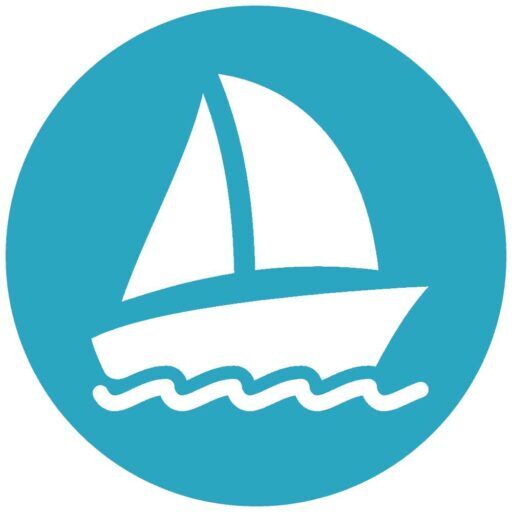
WaterCraft 101
Your guide to fun on the water!
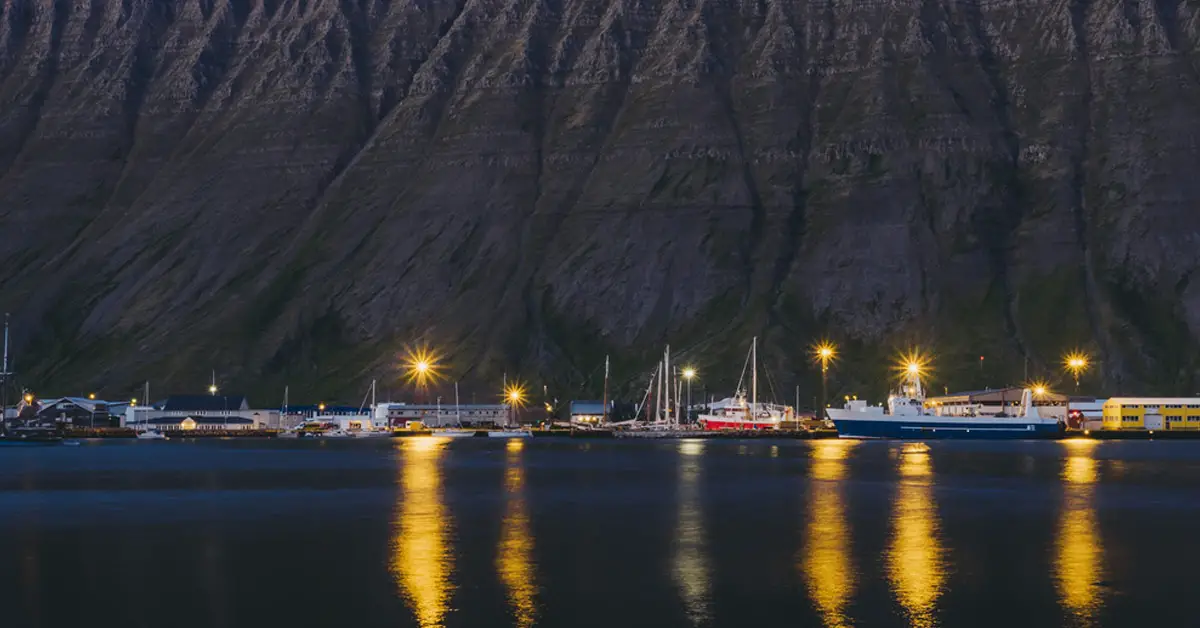
Meaning of a Single White Light on a Boat at Night: Essential Knowledge for Safe Boating
Navigating the waters at night is an experience filled with both mystery and beauty. The quiet of the darkness is broken only by the gentle lapping of the water against your vessel and the soft hum of the engine. Yet, the tranquil experience can also be fraught with danger if you’re not well-versed in the language of maritime navigation lights. One particular symbol, the single white light on a boat at night , is a crucial part of this silent dialogue at sea, holding a special meaning that every mariner, seasoned or novice, should know.
A single white light on a boat at night typically indicates a vessel is anchored or moored. It’s displayed at the highest practical point, visible from all directions, to alert others of the boat’s stationary position to avoid collisions.
This powerful luminary, glowing with an unspoken message in the inky blackness, is more than just a simple beacon. It’s part of a complex communication system that keeps seafarers safe on the water. Knowing how to decipher the code of the single white light and other essential navigational lights is an important aspect of boating safety .
Yet, many boaters are puzzled by this enigmatic signal, unsure of its significance. Let’s journey to uncover the mystery behind this important maritime symbol, furthering our understanding and ensuring safer seafaring adventures.
Table of Contents
The Importance of Navigation Lights: An Overview
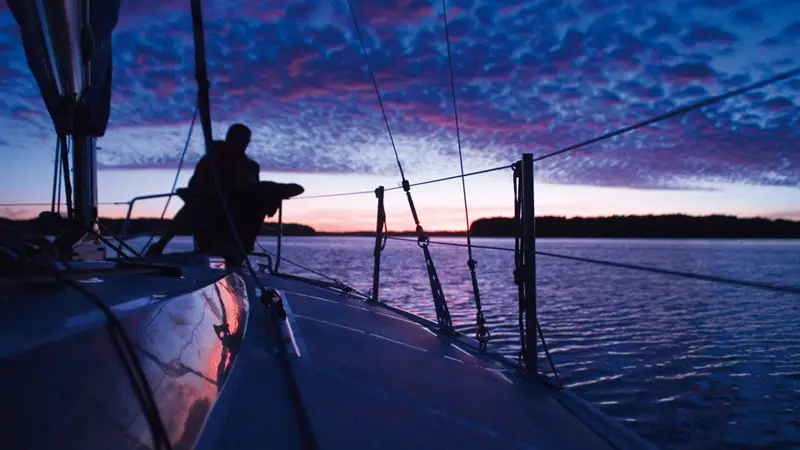
Navigational lights serve as the fundamental language of maritime communication when the sun dips below the horizon. They act as the guiding stars for boats wandering in the vast expanse of the ocean, helping to ensure safety and prevent collisions at sea.
The importance of understanding these luminous signals cannot be understated. They form a crucial part of the unwritten navigation rules, allowing vessels to ‘speak’ to each other through patterns of glowing colors in the inky darkness.
Every vessel, whether a large container ship or a small recreational boat, is required by maritime law to display certain lights from sunset to sunrise and in conditions of reduced visibility.
Each of these lights, from red and green sidelights to white masthead and stern lights, serves a distinct purpose, conveying vital information about the vessel’s size, type, and direction of movement. Therefore, the ability to interpret these lights correctly is a fundamental skill that all mariners should possess.
The single white light, for instance, plays a unique role in this maritime lexicon. Its meaning, often misunderstood or overlooked, is pivotal to understanding the situation of a vessel during the night hours. By delving deeper into the significance of this light and other navigational lights, we can enhance our proficiency in night-time navigation, ensuring safer and more confident journeys at sea.
Decoding the Single White Light: What Does It Mean?
In the vast, dark expanse of the sea, a single white light serves as a beacon of information. When seen alone, it generally indicates that a vessel is at anchor or moored. This information is invaluable to other seafarers, as it helps them steer clear of the stationary vessel and avoid potential collisions.
The display of this white light is not arbitrary. It is, in fact, carefully regulated by international maritime law. The International Regulations for Preventing Collisions at Sea (COLREGS) dictate that an anchored vessel, or one that is aground, should exhibit a white light visible from all directions.
This light should be placed where it can best be seen but at a lower level than lights showing the vessel’s sidelights. For vessels less than 50 meters long, this light is an all-around light, visible for at least two miles on a dark, clear night.
However, the single white light can also indicate other situations, depending on the viewing angle and the presence of other lights. For example, a vessel underway may show a single white light when observed from the stern.
Therefore, while decoding the single white light, it is essential to consider the entire context, including the absence or presence of other navigational lights and the angle from which the light is viewed.
The Anatomy of an Anchored Vessel: Positioning of the White Light
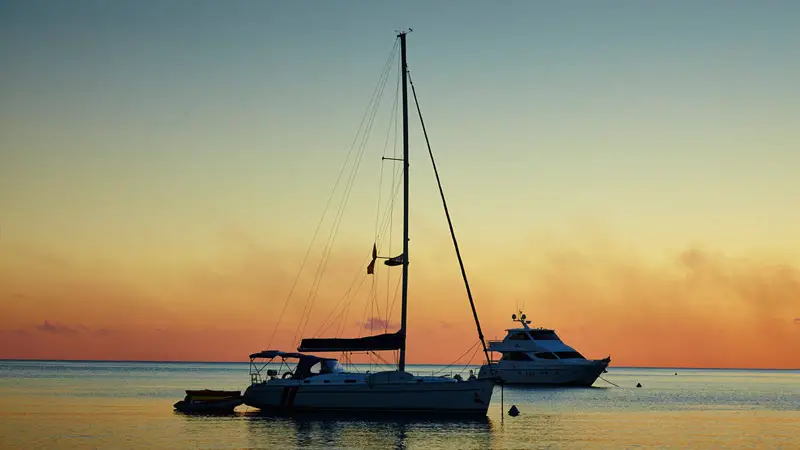
The white light on an anchored vessel is more than just a light; it’s a maritime language spoken at night, communicating essential information to other vessels navigating the same waters. Understanding where this light is positioned on an anchored vessel is a key factor in correctly interpreting its message and ensuring safe passage on the water.
- All-round White Light: As per maritime regulations, an anchored vessel should display an all-around white light where it can best be seen. This light must be visible from all directions, essentially serving as a 360-degree beacon, signaling other vessels of its presence.
- Bow: This is the front end of the boat. No specific lights are required here when the boat is at anchor, but when underway, the vessel’s port (red) and starboard (green) sidelights become visible from this perspective.
- Stern: The back end of the boat. A white stern light becomes visible from this angle if the boat is underway. However, for an anchored vessel, no stern light is necessary.
- Port and Starboard: These are a boat’s left (port) and right (starboard) sides. When at anchor, there are no specific lighting requirements for these areas.
- Mast: This is where the all-round white light is often displayed, especially on larger vessels. For smaller boats, the light may be hoisted on a pole or other prominent place where it is most visible.
- Deck: The top surface of the boat. Extra anchor lights may be displayed on the deck depending on the size and type of the vessel.
Other Key Maritime Lights: Understanding the Full Spectrum
Navigational lights, each with its unique color, position, and purpose, make up an intricate lexicon of the sea. Together, they paint a vivid picture of the maritime landscape after sunset, providing vital information about each vessel’s size, type, activity, and direction of travel. Mastering this luminous language is fundamental to safe and effective navigation, especially during hours of darkness or in conditions of reduced visibility.
Key maritime lights include:
- Masthead Light: A white light placed over the fore and aft centerline of the vessel. It shows an unbroken light over an arc of the horizon of 225 degrees and is visible from ahead to just aft of the beam.
- Sidelights: These are a green light on the starboard (right) side and a red light on the vessel’s port (left) side. Each shows an unbroken light over an arc of the horizon of 112.5 degrees and is visible from ahead to just aft of the beam on its respective side.
- Stern Light: A white light placed at the stern showing an unbroken light over an arc of the horizon of 135 degrees and visible from behind the vessel.
- Towing Light: A yellow light with the same characteristics as the stern light, used when a vessel tows another.
- All-Round Light: A light showing an unbroken light over an arc of the horizon of 360 degrees. Depending on the purpose, it can be of various colors (white, red, or green).
Boating Safety: The Role of the Single White Light
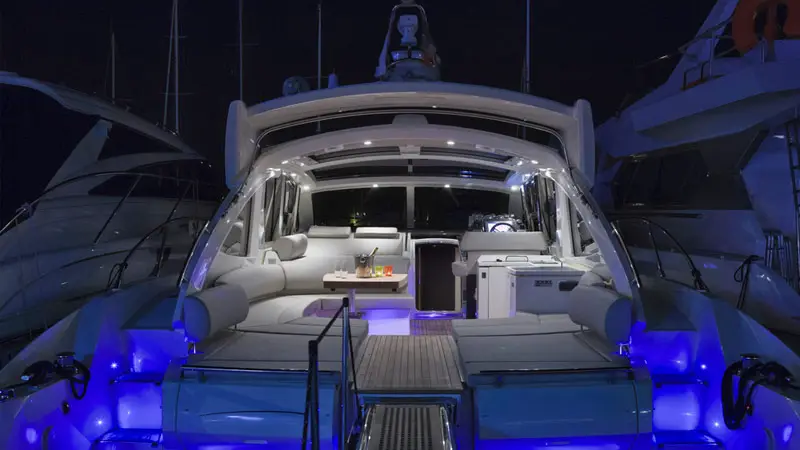
In boating safety, the single white light plays a crucial role. Its key function is communicating to other vessels that a boat is at anchor or aground, thus not in motion, helping prevent collisions in dark or low visibility conditions. The visibility of the light ensures that an anchored vessel is not overlooked amidst the vast expanse of the sea, acting as a beacon of safety.
By maritime regulations, the correct use of the single white light is a critical aspect of responsible boating. It serves as a clear and universal signal, cutting through the darkness, to communicate the vessel’s status to everyone navigating the same waters.
By understanding and respecting the meaning of this light, boaters contribute to a safer marine environment, reducing the risk of unfortunate incidents at sea. Hence, the single white light stands as a symbol of safety, a lighthouse on a smaller scale, guiding seafarers safely through the night.
Common Misconceptions about the Single White Light
Despite the seemingly straightforward purpose of the single white light, several misconceptions persist, often leading to confusion and, in worst-case scenarios, compromising safety at sea.
One common misunderstanding is the belief that a single white light always indicates a boat at anchor. While this is often the case, the single white light can also be seen from the stern of an underway vessel, which means the vessel is moving.
Another misconception is that a single white light can be displayed anywhere on the boat, regardless of its position or purpose. In reality, the placement of this light is strictly regulated.
According to the International Regulations for Preventing Collisions at Sea (COLREGS), the light must be visible from all directions and placed where it can best be seen. Still, it should not be higher than the sidelights. For boats less than 50 meters in length, the all-around white light serves as the primary signal.
Finally, some boaters mistakenly assume that the single white light is optional, treating it more as a convenience than a requirement. Displaying this light is a legal requirement for anchored vessels from sunset to sunrise and in conditions of reduced visibility.
Compliance ensures the safety of the vessel and its occupants and all other vessels navigating in the vicinity. All boaters must understand these distinctions to maintain safety and proper communication on the water.
Legal Requirements for Navigation Lights
The International Regulations for Preventing Collisions at Sea (COLREGS) set the legal requirements for navigation lights. These rules are recognized internationally and apply to all vessels, regardless of size or purpose. The main objective of these regulations is to prevent collisions between vessels in any body of water.
According to the COLREGS:
- From Sunset to Sunrise: All vessels, whether anchored, under sail or powered by an engine, must display the appropriate lights from sunset to sunrise. The exact timing for sunset and sunrise is generally considered to be when the sun is 6 degrees below the horizon.
- In Conditions of Reduced Visibility: In addition to the hours of darkness, vessels must also display navigation lights in conditions of reduced visibility, such as during fog, heavy rain, or snow.
- Types and Placement of Lights: The COLREGS specify the types of lights to be displayed (masthead lights, sidelights, stern lights, towing lights, all-round lights), their color, their arc of visibility, and their placement on the vessel. For instance, a vessel at anchor must display an all-around white light where it can best be seen.
- Visibility Range: The rules also state the minimum visibility range for each type of light, which varies depending on the size of the vessel. For example, for vessels less than 50 meters long, the all-around white light should be visible for at least 2 miles on a dark, clear night.
Failure to comply with these regulations can result in penalties, including fines. More importantly, improper use of navigation lights can lead to confusion and potential accidents at sea. Therefore, understanding and adhering to the legal requirements for navigation lights is critical to safe and responsible boating.
Bryan is a Las Vegas resident who loves spending his free time out on the water. Boating on Lake Mohave or Lake Havasu is his favorite way to unwind and escape the hustle and bustle of the city. More about Bryan.
Similar Posts
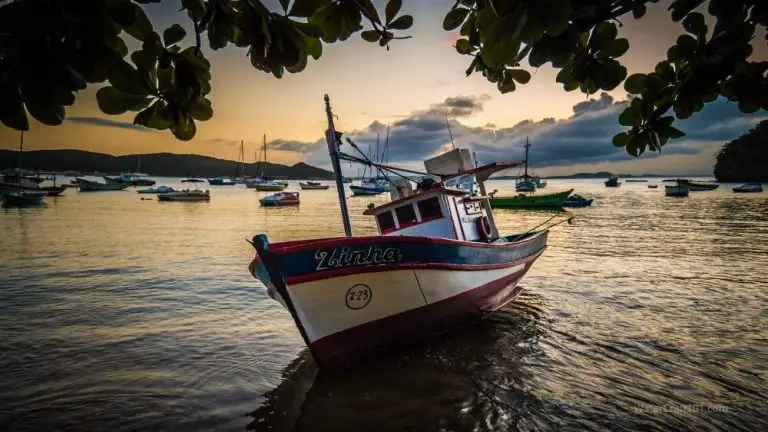
Why Does My Boat Lean to One Side? (Explained)
If your boat is leaning to one side you may be concerned there is a problem. There may or may not be an issue that you need to address. You’ll first need to understand what causes a boat to lean? A boat can lean because of windy weather, rough water conditions, unbalanced weight distribution on…
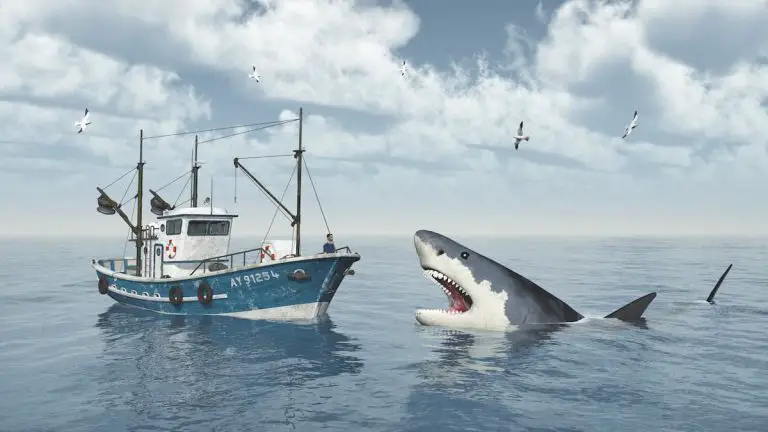
Are Sharks Scared Away by Boat Motors? (The Truth!)
Sharks are intimidating, but they shouldn’t keep you from enjoying your time in or on the water. Instead, it would be best to understand them, so you know what attracts them and what’ll drive them away. For example, take boat motors: Can their rotating wheels and whirring sound scare sharks? Sharks aren’t scared away by…
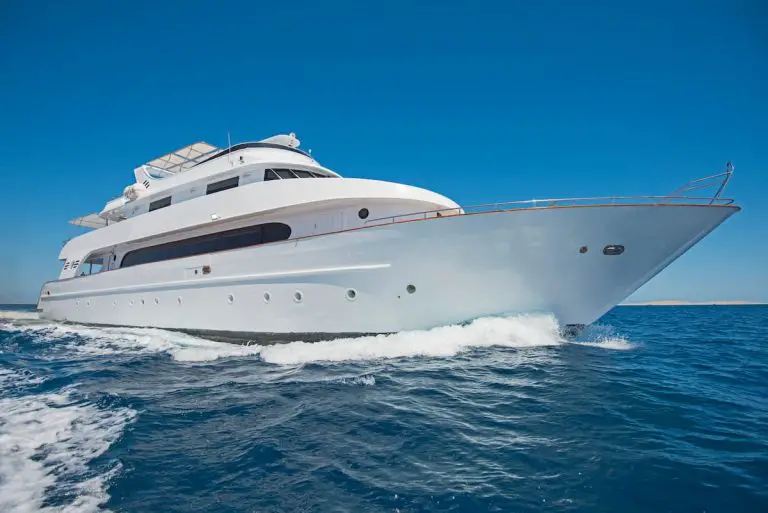
The 12 Safest Types of Boats Revealed (with Examples)
The safety of a boat is tested when it hits rough water. If you can steer it straight without bow steering when you hit the waves, then you can be confident you are using a safe boat. Not all boats come with this capability, so you need to choose one that’s specially designed to withstand…
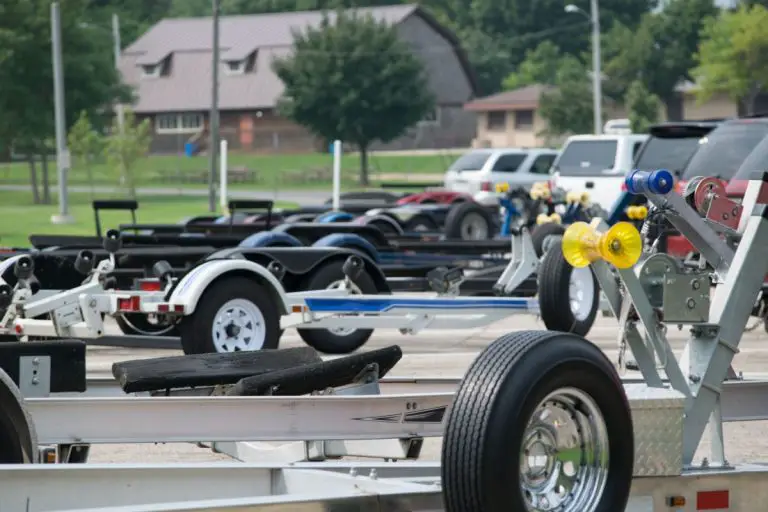
Tips For Building Boat Trailer Bunks With Composite Decking
Nowadays, composite decks are an alternative to wooden decks. They prove to be far more valuable and efficient. One of the growing uses of composite decks is in building boat trailer bunks. So what do you need to know to help you create a boat trailer bunk with composite decks? Let me give you some…
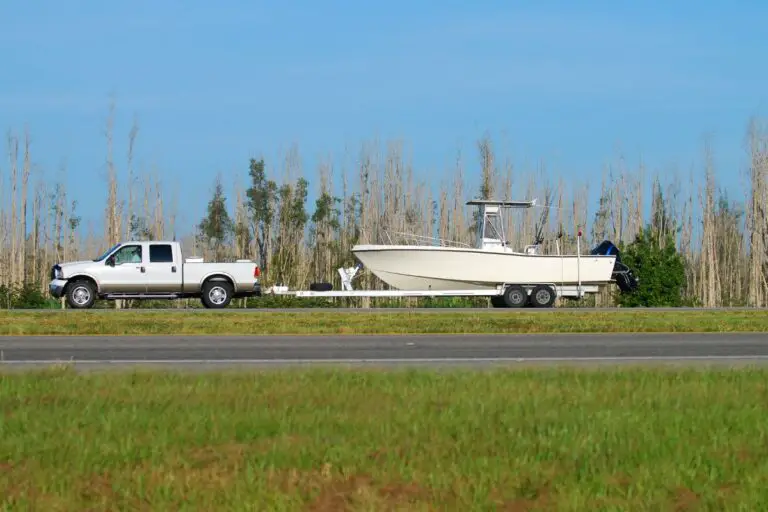
How to Protect Boat from Rock Chips: Essential Towing Tips and Techniques (Boating Protection)
Protecting your boat from rock chips is crucial to maintain its appearance and longevity. When towing your boat, the risk of rocks and debris damaging the hull increases, so it’s essential to be proactive and take measures to shield your investment. This article will provide useful tips and product recommendations, ensuring you enjoy smooth sailing…

Should I Paint the Bottom of My Aluminum Boat? Weighing the Pros and Cons
Navigating the waters of boat maintenance can often feel like steering through a sea of countless decisions. One such decision that many boat owners grapple with is related to a seemingly insignificant area of their vessels – the underside. Yes, painting the bottom of your aluminum boat is generally a good idea. It can protect…


IMAGES
VIDEO
COMMENTS
The basic rule is that side lights, a masthead light and a stern light are required. Permissible variations to this rule appear below. NOTE: Sailboats operating under engine power are considered power-driven and must follow the "Under Power" rules. Powerboats that are less than 12m (39.4') may substitute a single all-round light for ...
Navigation Lights for Powerboats. Power driven vessels underway shall exhibit a masthead light forward, sidelights and a stern light. Vessels less than 12 meters in length may exhibit an all around white light and side lights. Power driven boats on the Great Lakes may carry an all around white light in stead of a second masthead light and stern ...
exterior lighting. navigation lights. anchor lights. CONTACT WEST MARINE. Live Chat. 1-800-262-8464. Store Locator. Shop the best selection of Anchor Lights from West Marine. Visit for products, prices, deals and more!
Power boats less than 20 meters shall exhibit navigation lights as shown in Figure 1. (Note: 2 masthead lights are optional for vessels under 50 meters. ... Powered vessels and sailing vessels at anchor must display anchor lights. An anchor light for a boat less than 50 meters in length is an all-around white light visible for 2 miles exhibited ...
The Inland Rules have specific requirements as to anchor lights. That rule is quoted below, as is the USCG site reference. A 360-degree white all-around masthead light with two-mile visibility normally fulfills this requirement for most pleasure boats, but familiarize yourself with and follow the rule. Wire gauge, length of wiring, connections ...
A powerboat anchored at night must display an all-round light. Navigation lights for kayak or canoe (human-powered vessels) at night Navigation lights are also required for human-powered vessels (canoe, kayak) or for a sailing pleasure craft of less than 7 meters in length not under power.
Powerboats less than 164 feet (50 m) but longer than 39.4 feet (12 m) While underway - these vessels must display a green sidelight at the starboard side and a red sidelight at the port side. These sidelights should show an unbroken light from dead ahead to 112.5 degrees on either side and should be visible at a distance of 2 nautical miles (NM).
As an avid boater, I know the importance of having a reliable and bright anchor light to ensure safety and visibility on the water. Battery-powered anchor lights are a popular choice for boaters who want a hassle-free and portable option. After researching and testing various products, I have compiled a list of the best battery-powered anchor ...
Anchor Light Stern Light for Boats LED, Boat Navigation Lights 3 Nautical Mile Visibility, Waterproof IP67 White Fold Down Pontoon Boat Lights for Marine, Jon Boat, Small Boat (12~24V, 6") 5.0 out of 5 stars. 1. 100+ bought in past month. $12.99 $ 12. 99. 40% coupon applied at checkout Save 40% with coupon.
Five Oceans Anchor Light - Stern Lights for Boats, LED Anchor Light and Signal Flashlight Function, 2-Option Base Installation, Stern Light for Inflatable Boat, Small Tender, Canoe, Kayak - FO4690. 5.0 out of 5 stars. 2. $37.80 $ 37. 80. FREE delivery Jun 21 - 24 . Small Business.
Navigation light requirements vary by vessel size and type. For powerboats underway (not anchored), the basic requirements are a red sidelight on the port side, a green sidelight on the starboard side, a white masthead light shining forward, and white stern light. The masthead light must be higher than the sidelights. Read More
Vessels at Anchor. When a vessel is anchored at night outside a designated anchorage, an all-around light visible from at least 2m is required. During the day, an anchored vessel must display a black anchor ball. Minimum Visibility Range. Boats less than 12m (39.4'), sidelights are required to be visible for at least 1nm.
A tricolor light can be used only if the boat is powered by sails and not a motor. It cannot be used while regular sidelights are on. You can choose which to display but cannot use both at the same time. Vessels at Anchor of 40 to 65 Feet. For boats anchored away from a marina, there are also requirements for navigation lights.
Optionally, they can add a second masthead light. Power boats between 12 m and 50 m. Power boats between 12 m and 50 m must display a masthead light, sidelights and a stern light. Optionally, they can add a second masthead light. Navigation light requirements for anchored vessels. Boats must display an all-round white light when anchored in or ...
When it comes to powerboats, the type of anchor light used depends on the size of the vessel. Small power boats, such as those under 12 meters, typically use a single all-around white light. This light must be visible from 360 degrees and must be placed at the highest point on the boat. Larger power boats, on the other hand, may require ...
Powerboats up to 20 meters - Side lights, masthead, and stern lights are all required as listed above; side and stern lights must be visible to two nautical miles and masthead lights to three nautical miles. Sailboats up to 20 meter - Must show side lights and a white stern light or tricolored masthead light as listed above; all must be ...
An all-round white light is a white light that faces 360 degrees. These lights are used on smaller boats and on boats that are at anchor. They can be replaced by making use of a stern light and a masthead light. Another type of light is the tri-color light. A tri-color light can be used on a sailboat to portray the white, green, and red lights.
A powerboat anchored at night must display an all-around white light. When boating at night what does a single white light mean? All-Round White Light: On power-driven vessels less than 39.4 feet in length, this light may be used to combine a masthead light and sternlight into a single white light that can be seen by other vessels from any ...
Understanding where this light is positioned on an anchored vessel is a key factor in correctly interpreting its message and ensuring safe passage on the water. All-round White Light: As per maritime regulations, an anchored vessel should display an all-around white light where it can best be seen. This light must be visible from all directions ...
In 1938, it was granted town status. [citation needed]Administrative and municipal status. Within the framework of administrative divisions, it is incorporated as Elektrostal City Under Oblast Jurisdiction—an administrative unit with the status equal to that of the districts. As a municipal division, Elektrostal City Under Oblast Jurisdiction is incorporated as Elektrostal Urban Okrug.
1.14 Vessels to be anchored or moored only at designated sites (1)A person must not, while in the sanctuary zone of a marine park, anchor or moor a vessel except in an area, or at a mooring, (if any) designated for that purpose by the relevant Ministers or by the relevant management rules. Maximum penalty—100 penalty units.
596K subscribers in the vexillology community. A subreddit for those who enjoy learning about flags, their place in society past and present, and…
Elektrostal. Elektrostal ( Russian: Электроста́ль) is a city in Moscow Oblast, Russia. It is 58 kilometers (36 mi) east of Moscow. As of 2010, 155,196 people lived there.
17A Restrictions on time at anchor (1) The operator of a vessel must not allow a vessel to be at anchor in NSW waters for more than 90 days in any calendar year. (2) The operator of a vessel must not allow a vessel to be at anchor in any one place in NSW waters for more than 28 days in any calendar year. Maximum penalty—50 penalty units.
horizontal plane, in relation to a light fitting, means the horizontal plane passing through the centre of the light source (for example the bulb) of the light fitting. Housing Alterations Codemeans the code for complying development set out in State Environmental Planning Policy (Exempt and Complying Development Codes) 2008 [NSW]
State Housing Inspectorate of the Moscow Region Elektrostal postal code 144009. See Google profile, Hours, Phone, Website and more for this business. 2.0 Cybo Score. Review on Cybo.